Artillery in Canada (6) Québec: Lévis
Artillerie préservée au Québec,
Artillery preserved in Québec,
Lévis
The aim of this website is to locate, identify and document every historical piece of artillery preserved in Canada. Many contributors have assisted in the hunt for these guns to provide and update the data found on these web pages. Photos are by the author unless otherwise credited. Any errors found here are by the author, and any additions, corrections or amendments to this list of Guns and Artillery in Canada would be most welcome and may be e-mailed to the author at [email protected].
For all official data concerning the Royal Regiment of Canadian Artillery, please click on the link to their website:
The Royal Regiment of Canadian Artillery
Note: Back in the day, artillery in Canada was referred to by its radio call sign "Sheldrake". It is now referred to by its "Golf" call sign. (Acorn sends)
Le but de ce site Web est de localiser, d'identifier et de documenter chaque pièce d'artillerie historique conservée au Canada.
De nombreux contributeurs ont aidé à la recherche de ces armes à feu pour fournir et mettre à jour les données trouvées sur
ces pages Web. Les photos sont de l'auteur, sauf indication contraire. Toute erreur trouvée ici est de l'auteur, et tout ajout, correction
ou amendement à cette liste d'armes à feu et d'artillerie au Canada serait le bienvenu et peut être envoyé par courriel à l'auteur
à [email protected].
Pour toutes les données officielles concernant le Régiment royal de l'Artillerie canadienne, veuillez cliquer sur le lien vers
leur site Web: du Régiment royal de l'Artillerie canadienne.
Remarque: À l'époque, l'artillerie au Canada était désignée par son indicatif d'appel radio «Sheldrake». Il est maintenant
désigné par son indicatif d'appel "Golf". (Acorn envoie)Une traduction au français pour l'information technique présente serait grandement apprécié. Vos corrections, changements
et suggestions sont les bienvenus, et peuvent être envoyés au [email protected].
Lévis, 6th Field Artillery Regiment, Royal Canadian Artillery
The 6th Field Artillery Regiment, is a Primary Reserve Royal Canadian Artillery (RCA) regiment located at 10 Arsenal Street, Lévis, Québec. It is part of 35 Canadian Brigade Group in the 2nd Canadian Division. Its headquarters is located in Lévis, Quebec. The regiment is composed primarily of members from different batteries in the regions of Lévis, Montmagny and Val-Belair, and has a total authorized strength of 335. The 6th Field Artillery Regiment consists of four Batteries. The 57th Battery surveillance and target acquisition, and the Command and Service Battery are located in Lévis. The 58th Field Artillery Battery (formerly Air Defense) is located in Val Bel-Air. Finally, the 59th Field Artillery Battery is located in Montmagny. The 6th Field Artillery Regiment is the first artillery regiment in Canada to be commanded by a woman : Lieutenant-Colonel Chantal Bérubé.

35 Canadian Brigade Group Shoulder patch.
Écusson d'épaule du 35e Groupe-brigade du Canada.
Lévis, 6e Régiment d'artillerie de campagne, RAC
Le 6e Régiment d’artillerie de campagne (6 RAC) est un régiment d'artillerie de campagne de la Première réserve de l'Armée canadienne des Forces canadiennes. Il fait partie du 35e Groupe-brigade du Canadadans la 2e Division du Canada. Son quartier général est situé à 10 Rue Arsenal, Lévis au Québec. Le régiment est surtout composé de membres provenant des différentes batteries dans les régions de Lévis, Montmagny et Val-Belair, et a un effectif total autorisé de 335.
Le 6 RAC est composé de quatre batteries. La 57e Batterie de surveillance et d'acquisition d'objectifs, ainsi que la Batterie de Commandement et Service sont situées à Lévis. La 58e Batterie d'artillerie de campagne (anciennement de défense aérienne) est située à Val Bel-Air. Finalement, la 59e Batterie d'artillerie de campagne est située à Montmagny. Le 6 RAC est le premier régiment d’artillerie au Canada à être commandé par une femme, la Lieutenant-colonel Chantal Bérubé.
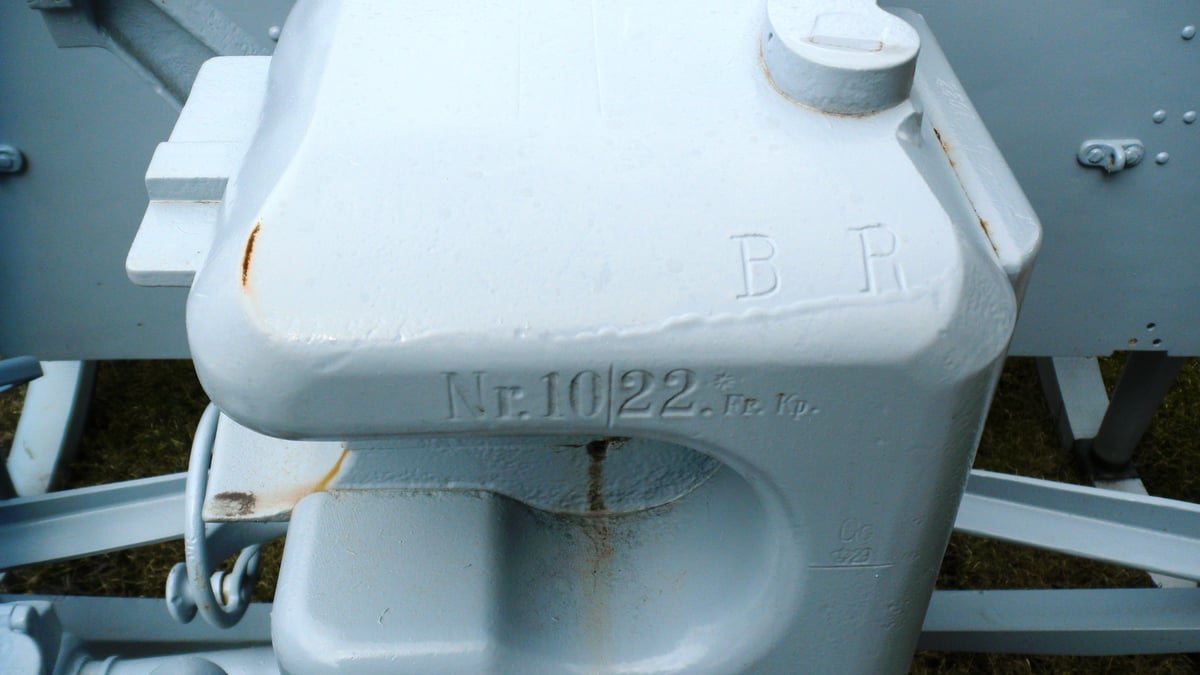
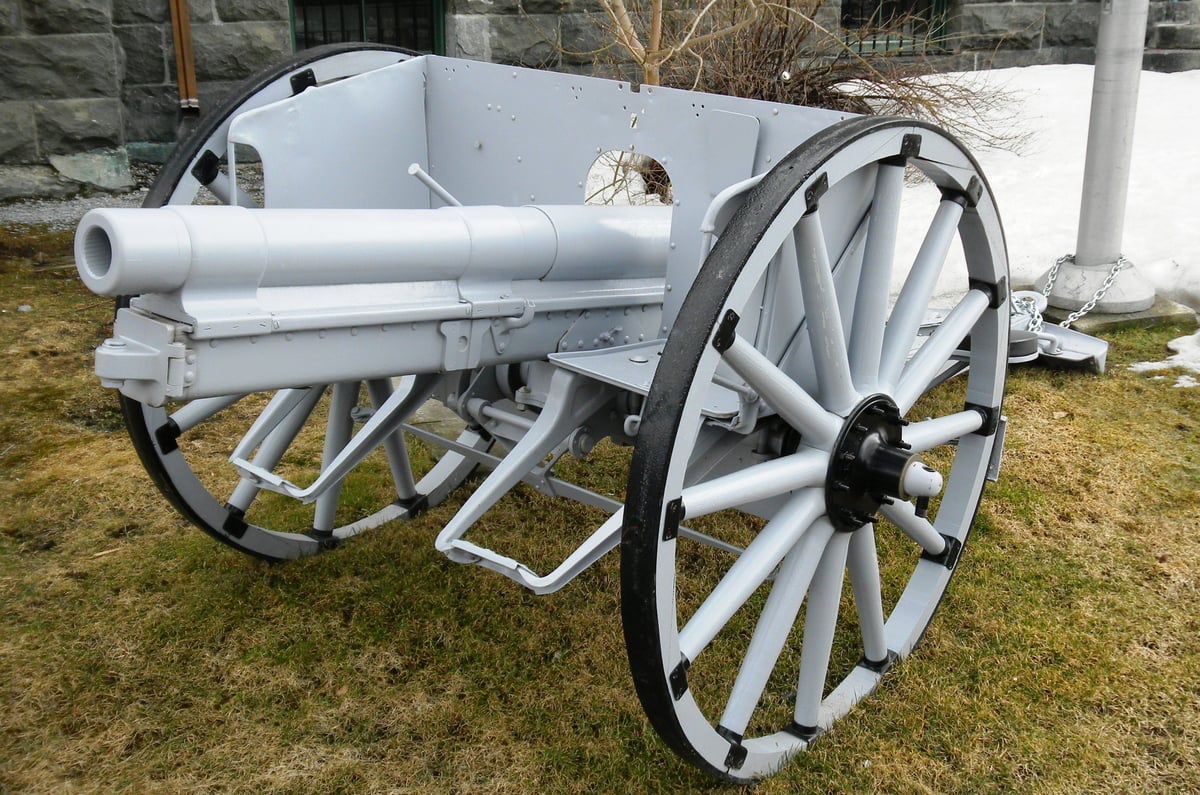
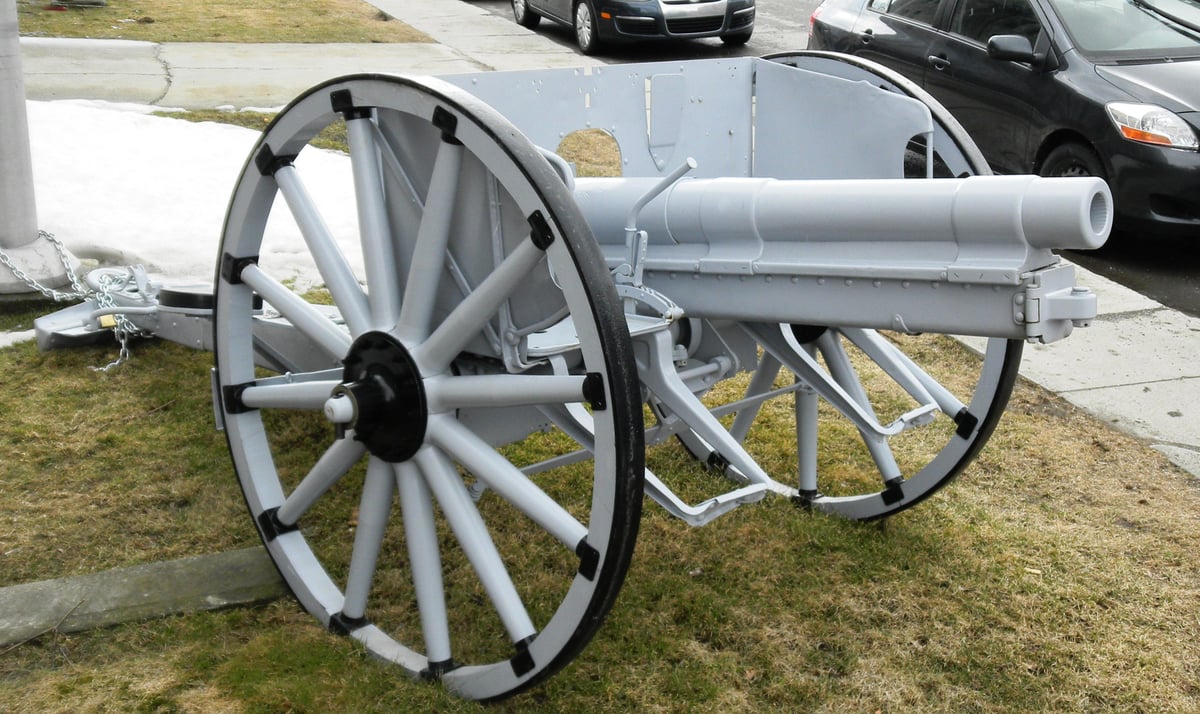
(Author Photos)
German First World War 7.7-cm Feldkanone 96 neuer Art (7.7-cm FK 96 n.A.), (Serial Nr. 1022), captured on 8 Aug 1918 by the 13th Battalion (Royal Highlanders of Canada), 3rd Infantry Brigade, 1st Canadian Division, Canadian Expeditionary Force (CEF), North of Aubercourt, France. 10 rue de l’Arsenal Lévis.
Première guerre mondiale allemande 7.7-cm Feldkanone 96 neuer Art (7.7-cm FK 96 nA), (Serial Nr.1022), capturé le 8 août
1918 par le 13th Battalion (Royal Highlanders of Canada), 3rd Infantry Brigade, 1st Canadian Division , Corps
expéditionnaire canadien (CEC), au nord d'Aubercourt, France. 10 rue de l’Arsenal Lévis.
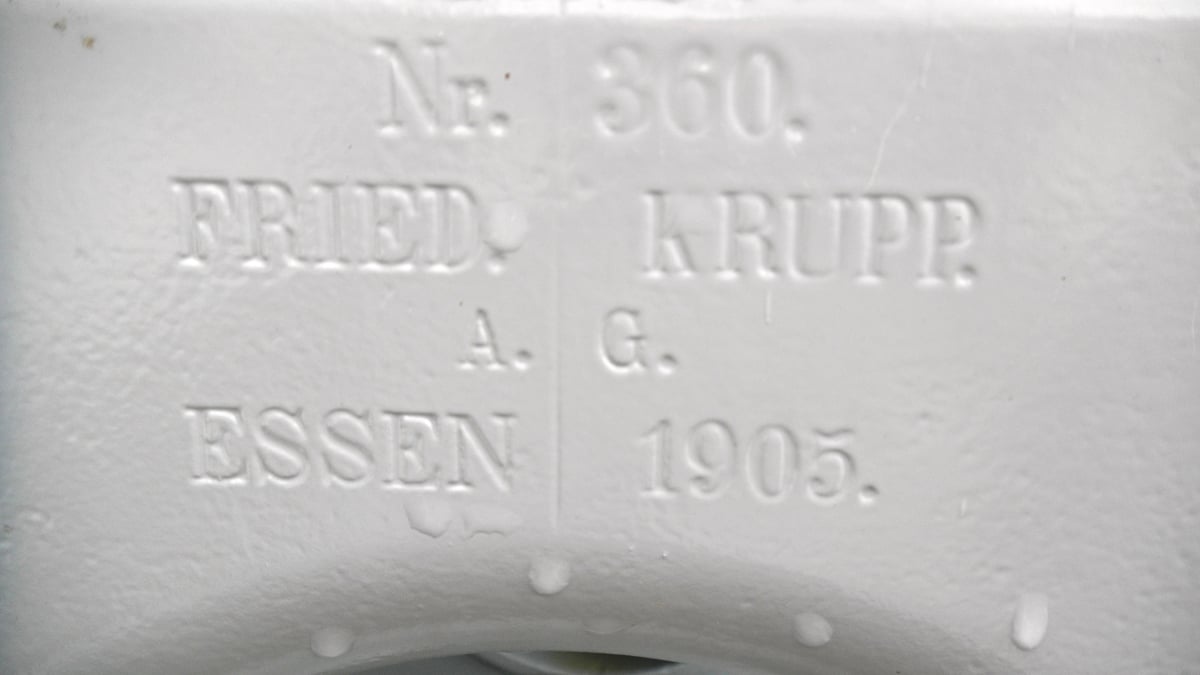
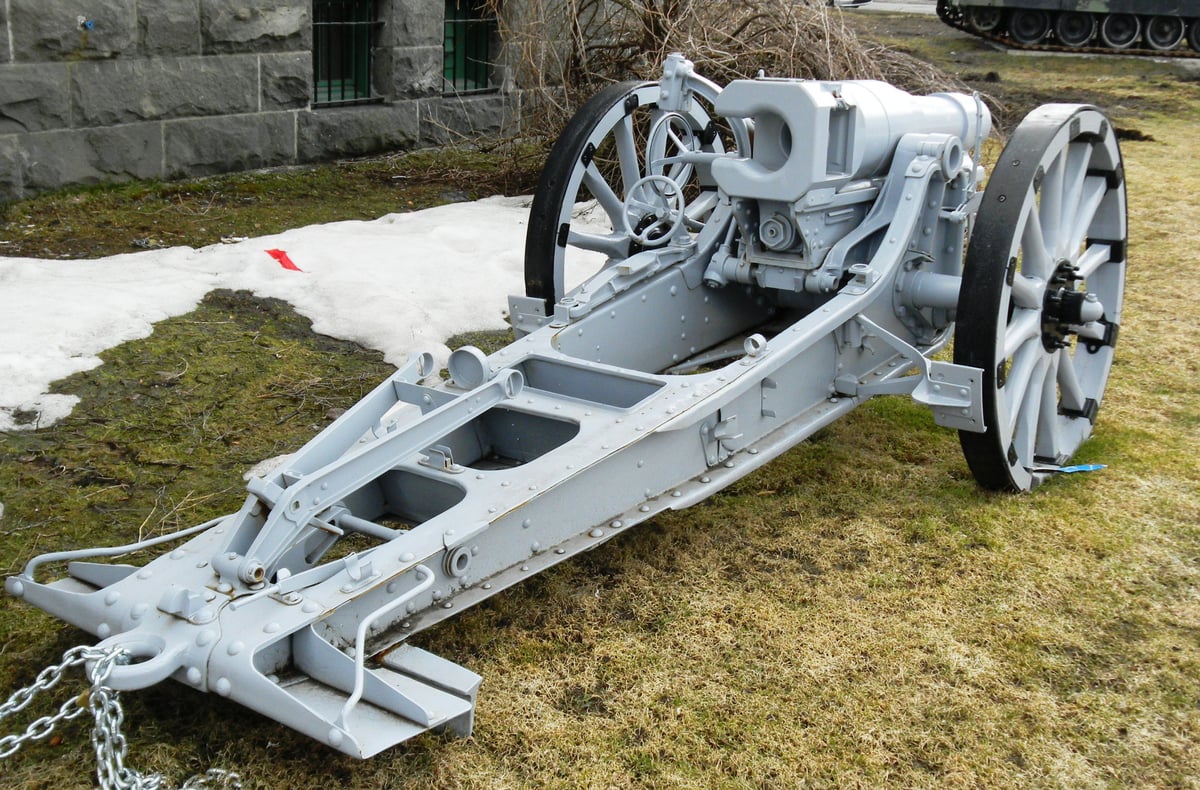
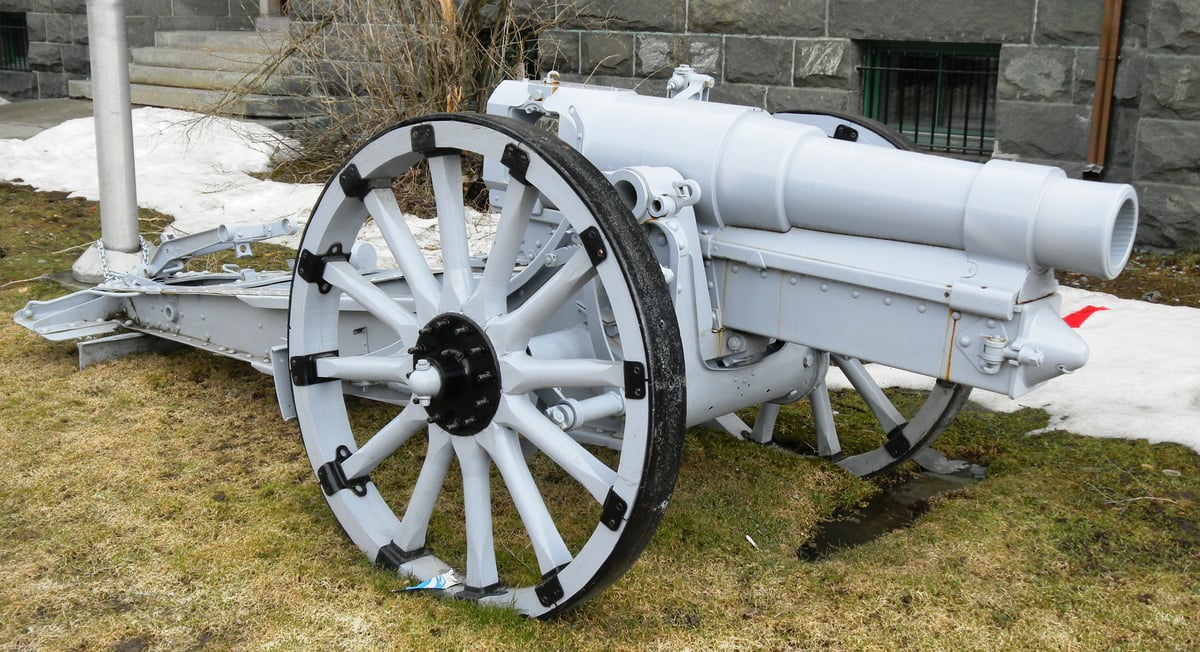
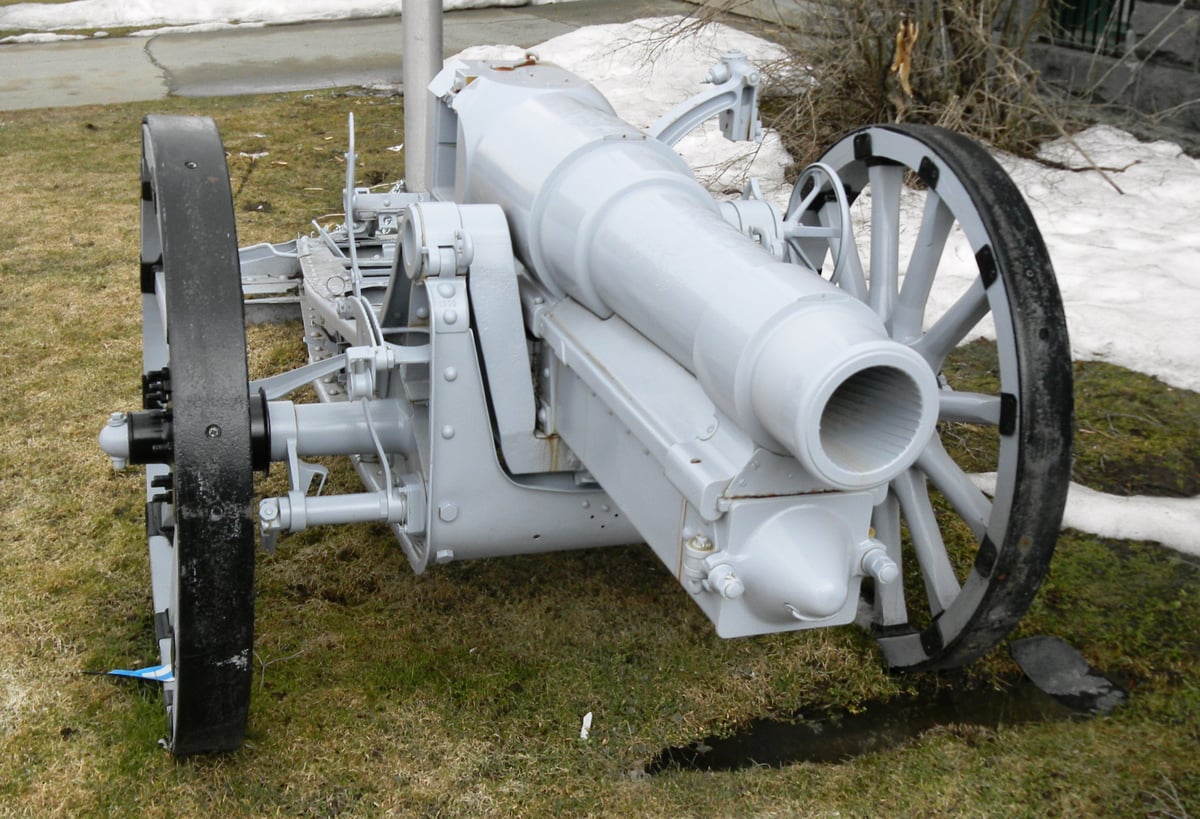
(Author Photos)
German First World War 15-cm schwere Feldhaubitze 1902 (15-cm sFH 02), (Serial Nr. 360), this gun was also captured on 8 Aug 1918 by the 13th Battalion (Royal Highlanders of Canada), 3rd Infantry Brigade, 1st Canadian Division, Canadian Expeditionary Force (CEF), North of Aubercourt, France. 10 rue de l’Arsenal.
The 15 cm schwere Feldhaubitze 1902 (15 cm sFH 02) was a German heavy field howitzer introduced in 1903. It was the first artillery piece to use a modern recoil system in the German Army. Some 416 were in service at the beginning of the war. Its mobility, which allowed it to be deployed as medium artillery, and fairly heavy shell gave the German army a firepower advantage in the early battles in Belgium and France in 1914 as the French and British armies lacked an equivalent.
Première guerre mondiale allemande 15-cm schwere Feldhaubitze 1902 (15-cm sFH 02), (Serial Nr.360), ce canon a
également été capturé le 8 août 1918 par le 13th Battalion (Royal Highlanders of Canada), 3rd Infantry Brigade, 1st
Division canadienne, Corps expéditionnaire canadien (CEC), Nord d'Aubercourt, France. 10 rue de l’Arsenal.Le schwere Feldhaubitze 1902 de 15 cm (15 cm sFH 02) était un obusier de campagne lourd allemand introduit en 1903.
Ce fut la première pièce d'artillerie à utiliser un système de recul moderne dans l'armée allemande. Quelque 416 étaient en
service au début de la guerre. Sa mobilité, qui lui a permis d'être déployé comme artillerie moyenne, et ses obus assez lourds
ont donné à l'armée allemande un avantage de puissance de feu dans les premières batailles en Belgique et en France en 1914
car les armées française et britannique manquaient d'équivalent.
25-pounder C Mk. 2 QF Field Gun with No. 9 circular firing platform. Originally with the Irish Army, now with 6e RAC.
40-mm Bofors Light Anti-Aircraft Gun, Camping du Fort De La Martinière, 9825 Bd de la Rive Sud, Lévis, QC G6V 9R4 at the Royal Canadian Legion Memorial.
25 livres C Mk. 2 Canon de campagne QF avec plate-forme de tir circulaire n ° 9. À l'origine avec l'armée irlandaise,
maintenant avec le 6e RAC.
Canon antiaérien léger Bofors de 40 mm, Camping du Fort De La Martinière, 9825 Bd de la Rive Sud, Lévis, QC G6V 9R4
au Mémorial de la Légion royale canadienne.
Lévis, Fort No. 1


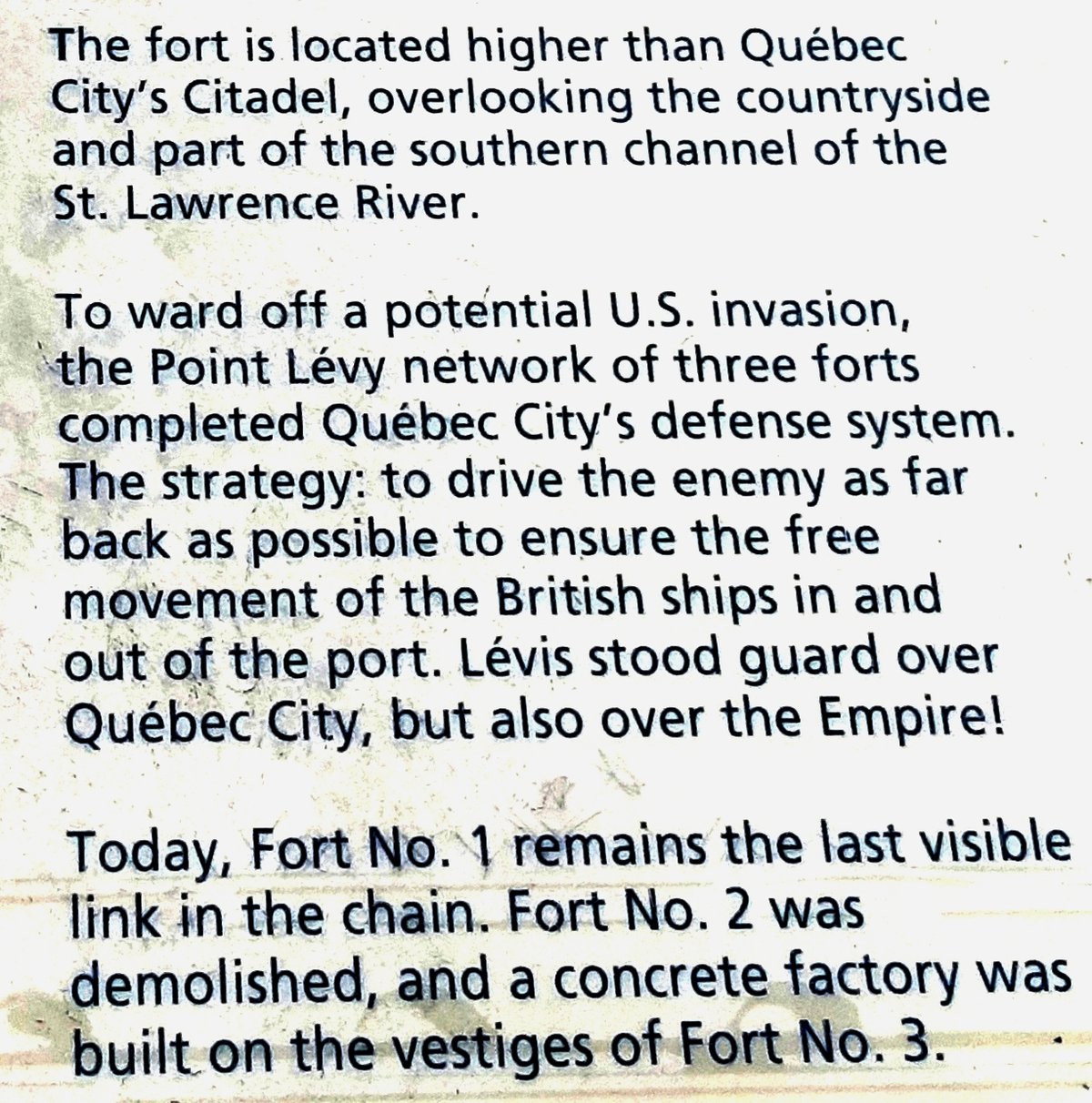

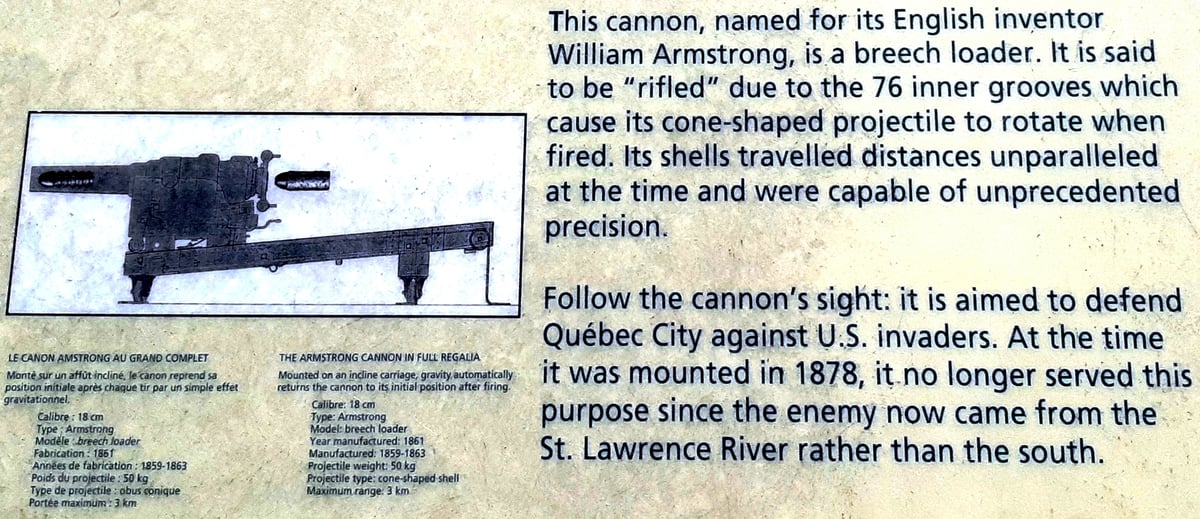
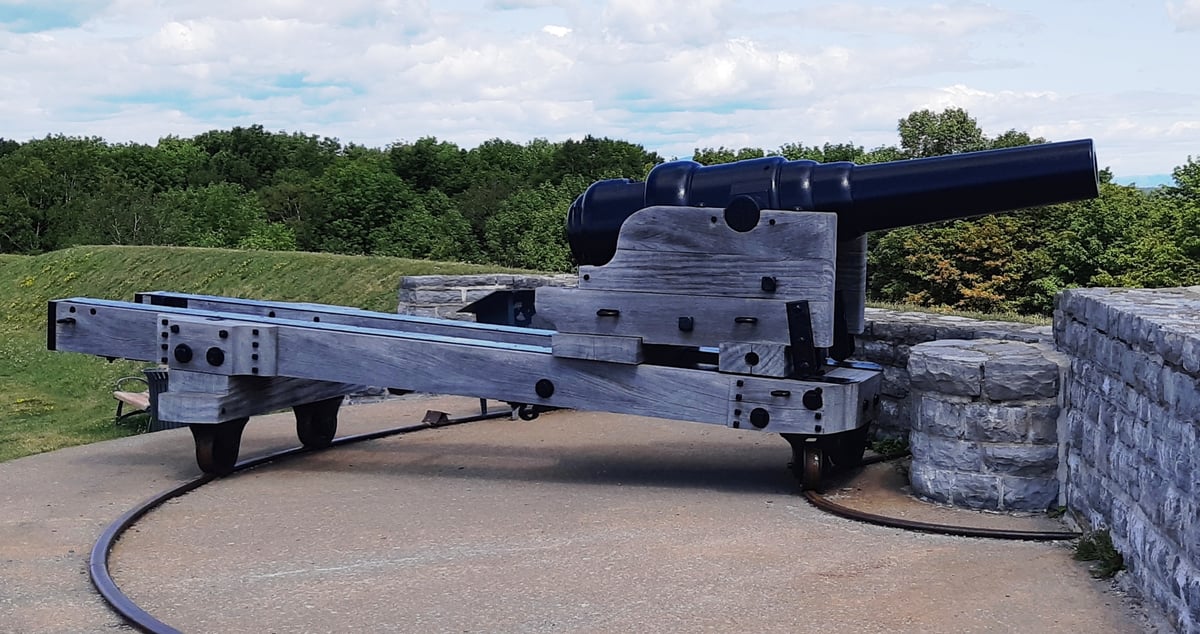
(Author Photos)
Armstrong 7-inch 72-cwt (110-pounder) Rifled Breech-Loading Gun, weight 81-1-0 (9,100 lbs), (RGF No. 243) Queen Victoria cypher, broad arrow mark, mounted on a long wood traversing carriage on the ramparts of Fort No. 1 facing East.
Armstrong 7 pouces 72 cwt (110 livres) Canon à chargement par la culasse rayée, poids 81-1-0 (9100 lb), (RGF n ° 243) Chiffre
Queen Victoria, large flèche, monté sur un long chariot traversant en bois sur les remparts du fort n ° 1 face à l'est.
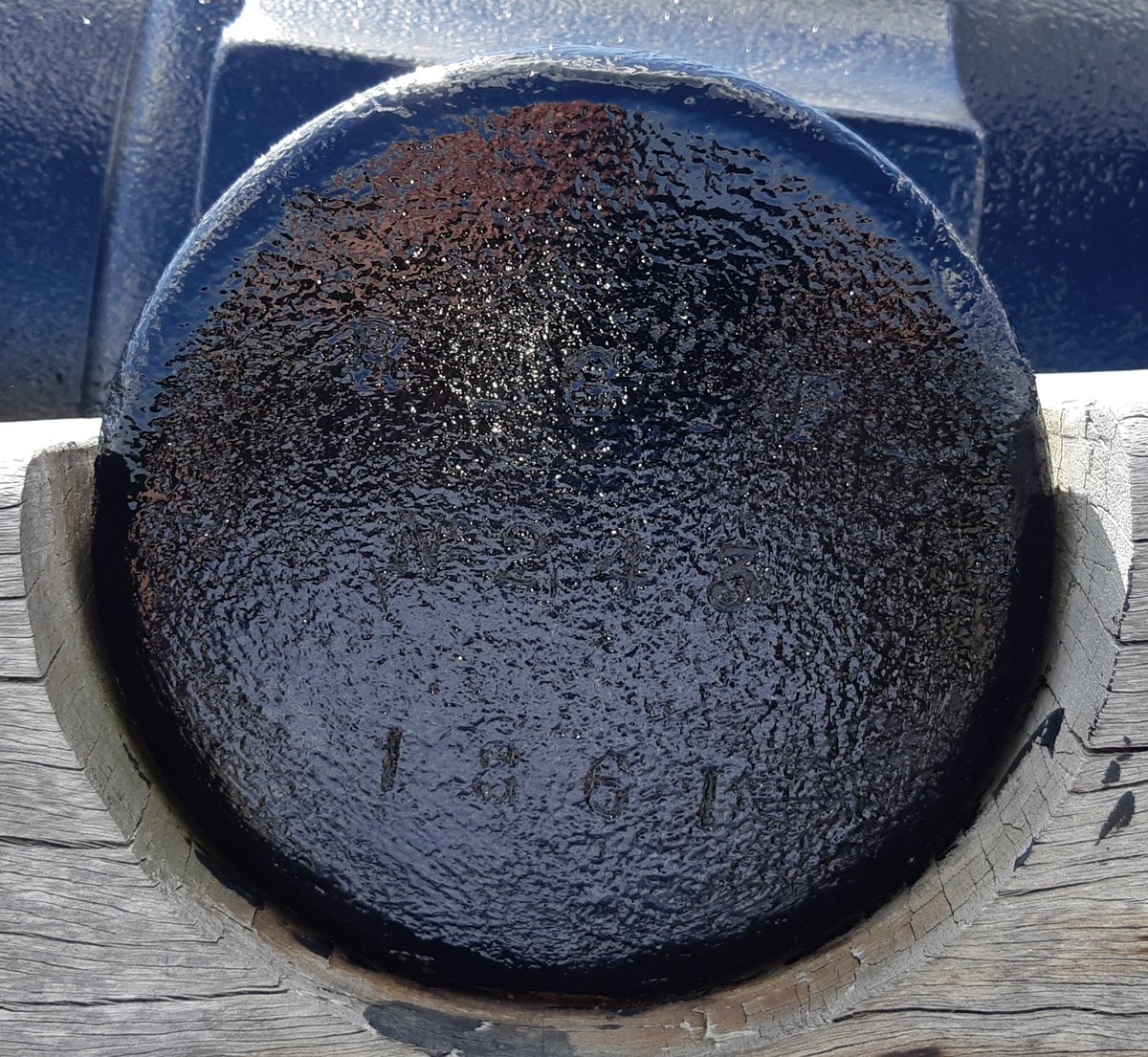
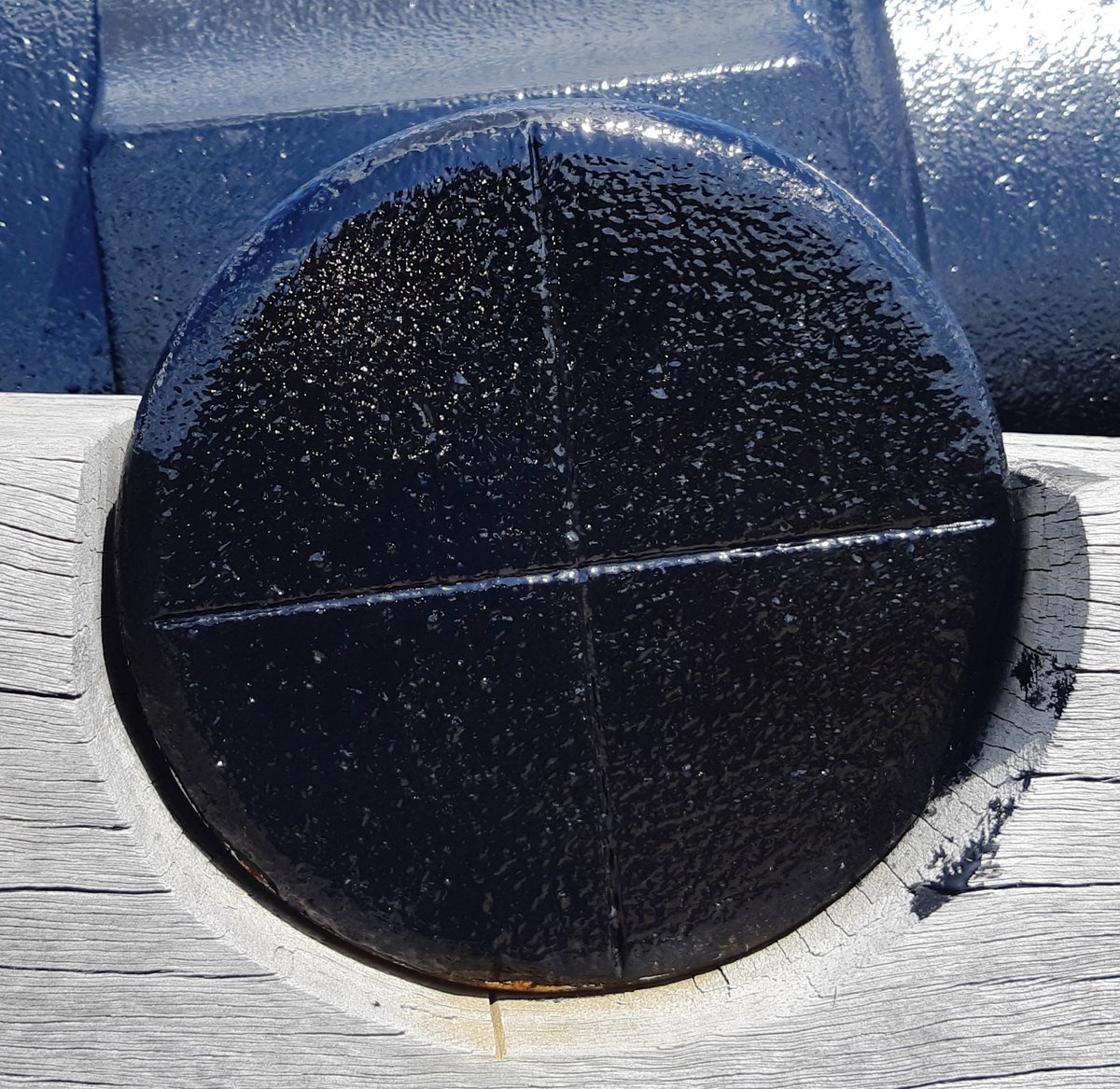
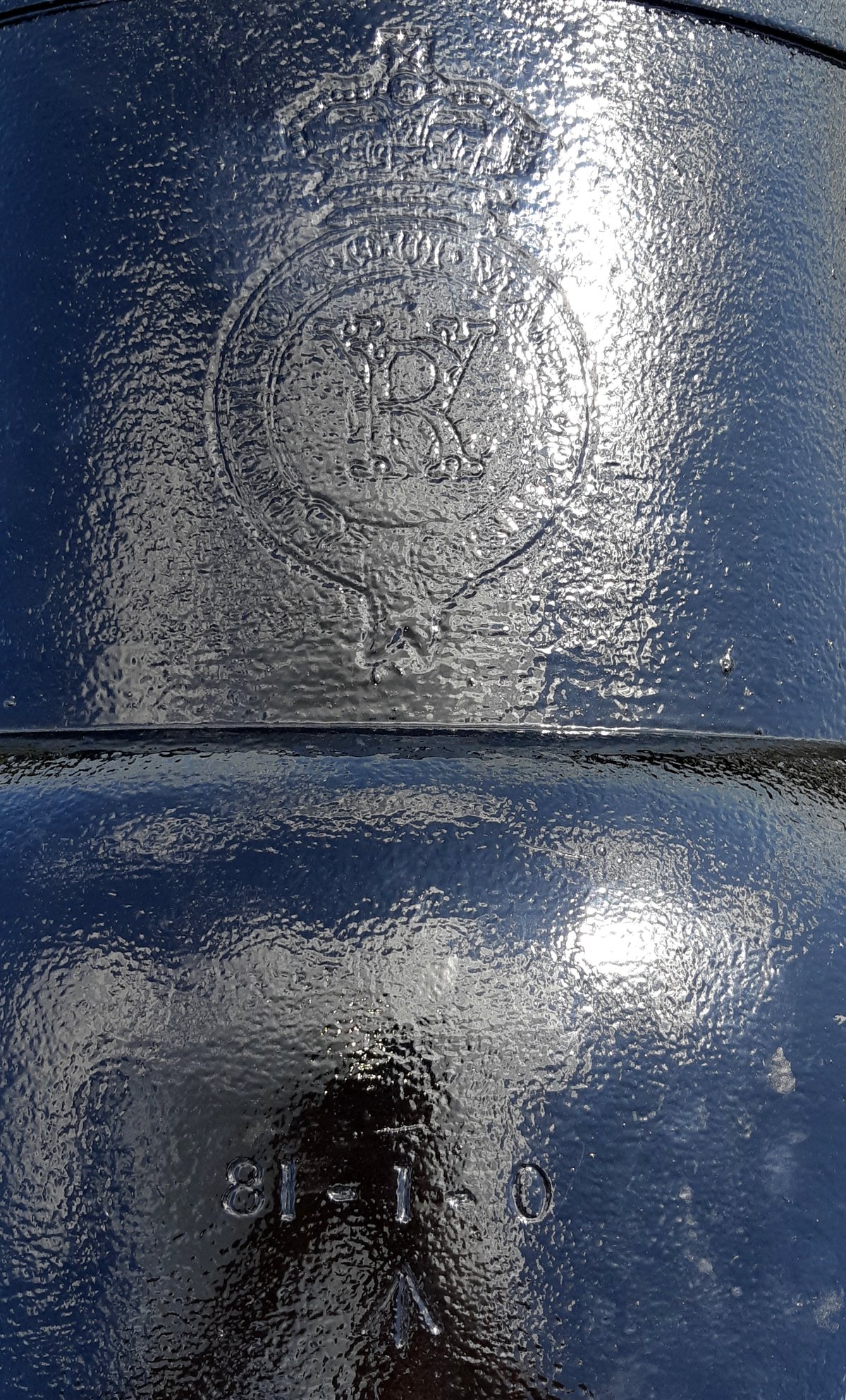
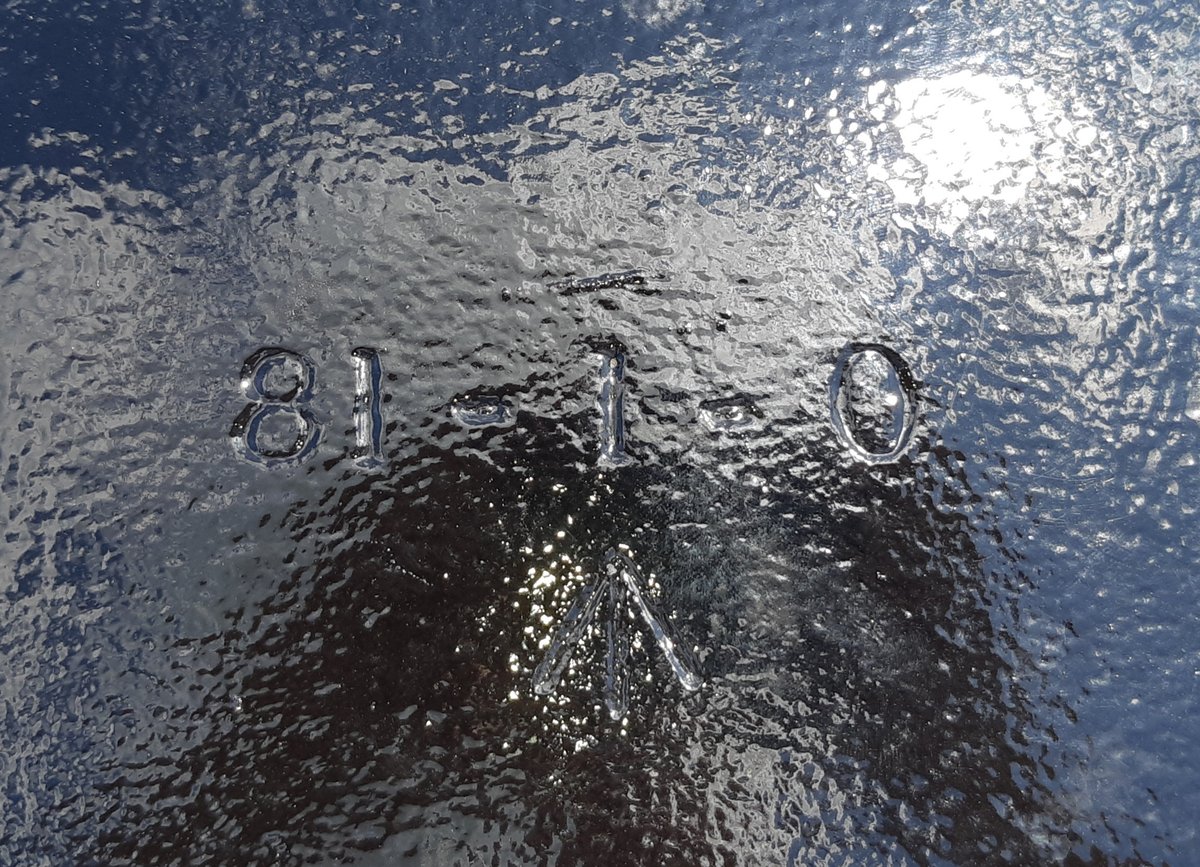
(Author Photos)
Armstrong 7-inch 72-cwt (110-pounder) Rifled Breech-Loading Gun, weight 81-1-0 (9,100 lbs), (RGF No. 243) Queen Victoria cypher, broad arrow mark, mounted on a long wood traversing carriage on the ramparts of Fort No. 1 facing East.
Armstrong 7 pouces 72 cwt (110 livres) Canon à chargement par la culasse rayée, poids 81-1-0 (9100 lb), (RGF n ° 243) Chiffre
Queen Victoria, large flèche, monté sur un long chariot traversant en bois sur les remparts du fort n ° 1 face à l'est.
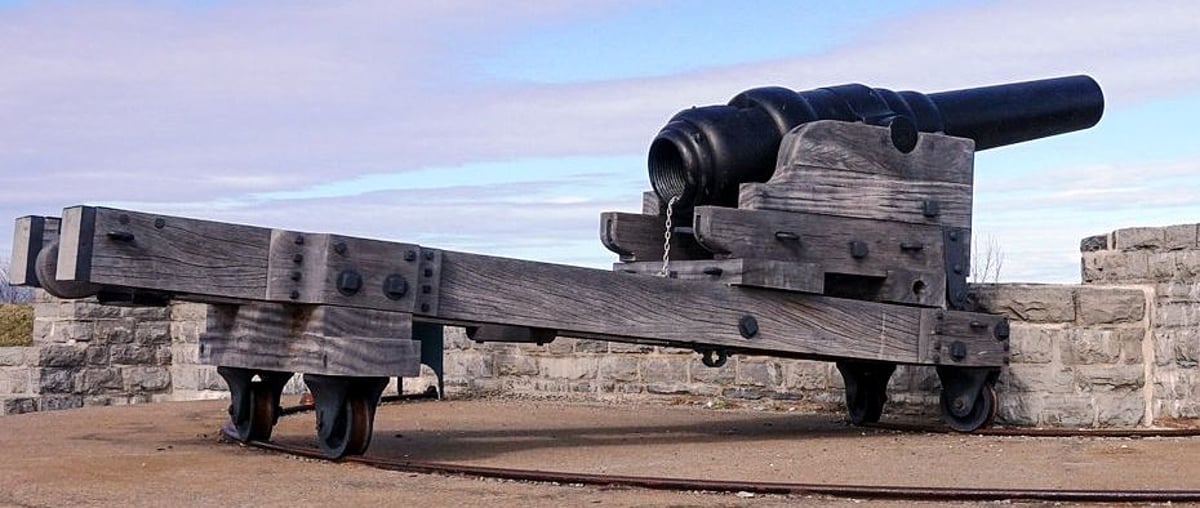
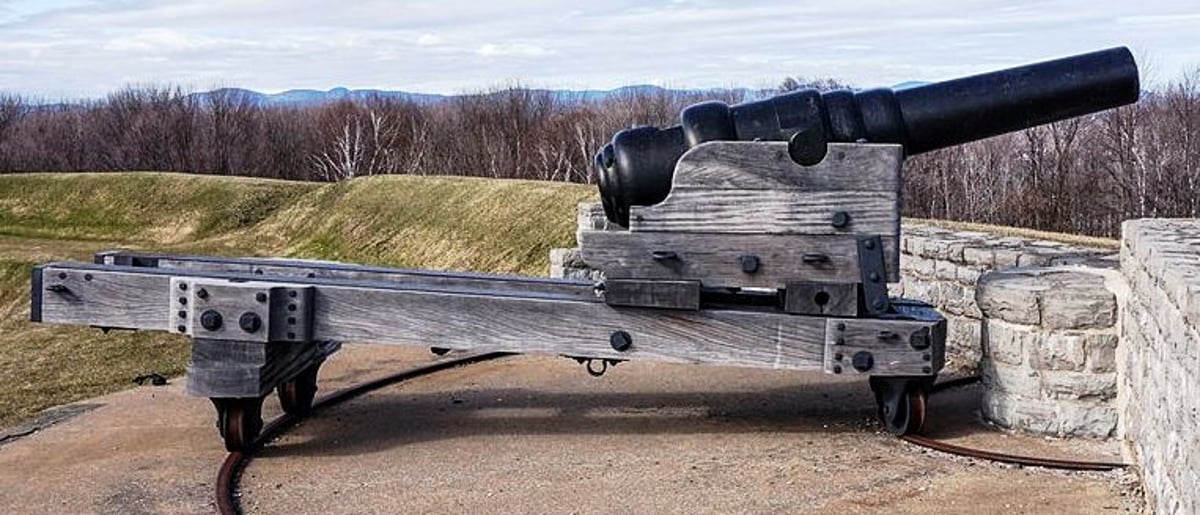
(Bernard Gagnon Photos)
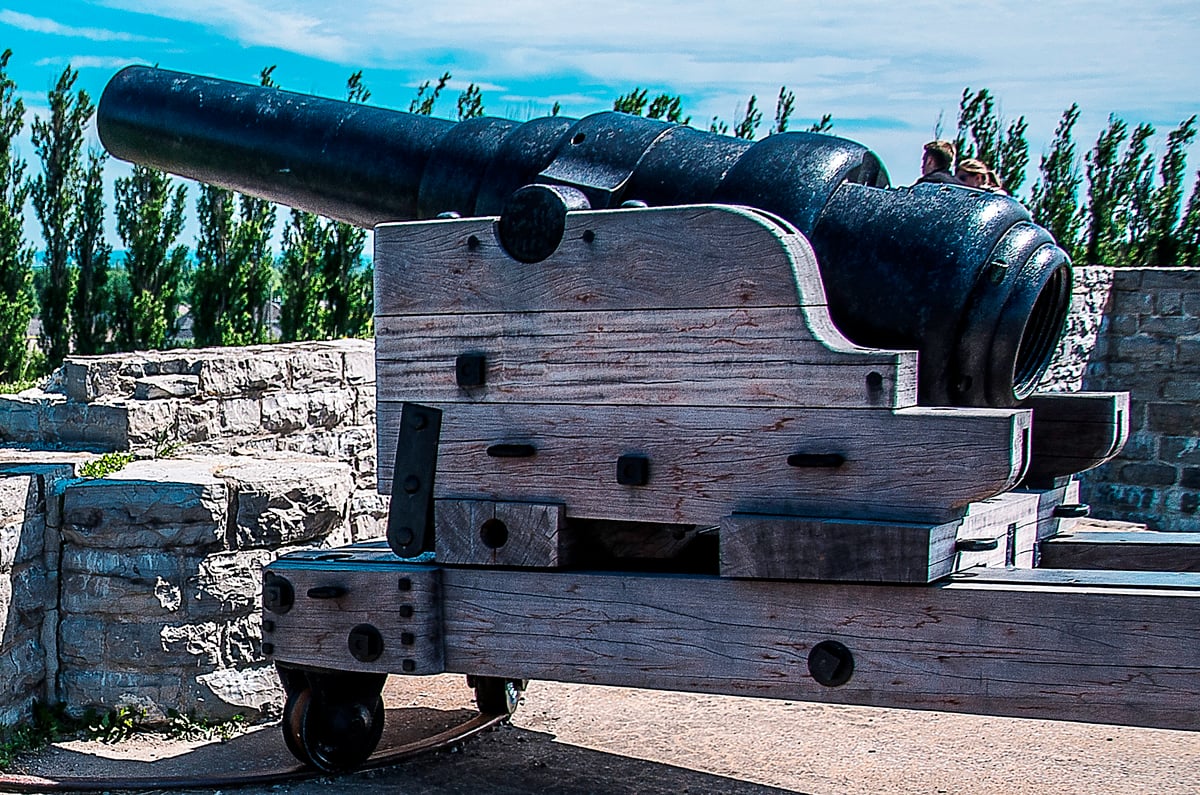
(Jean-Phillipe Bourgoin Photo)
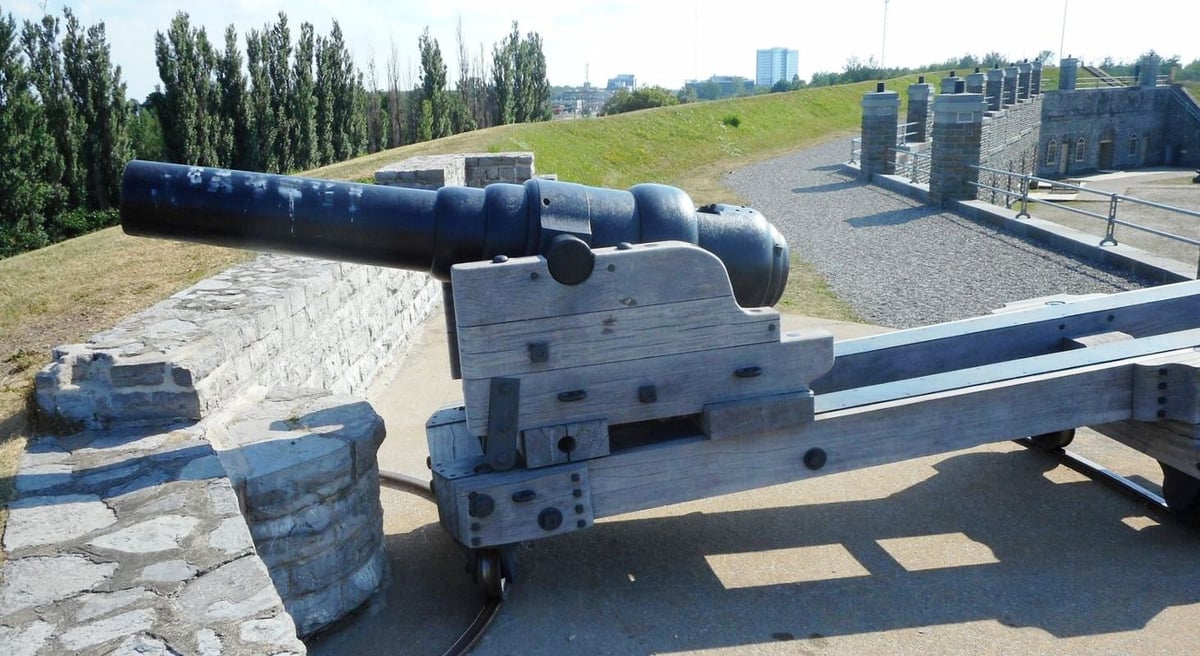
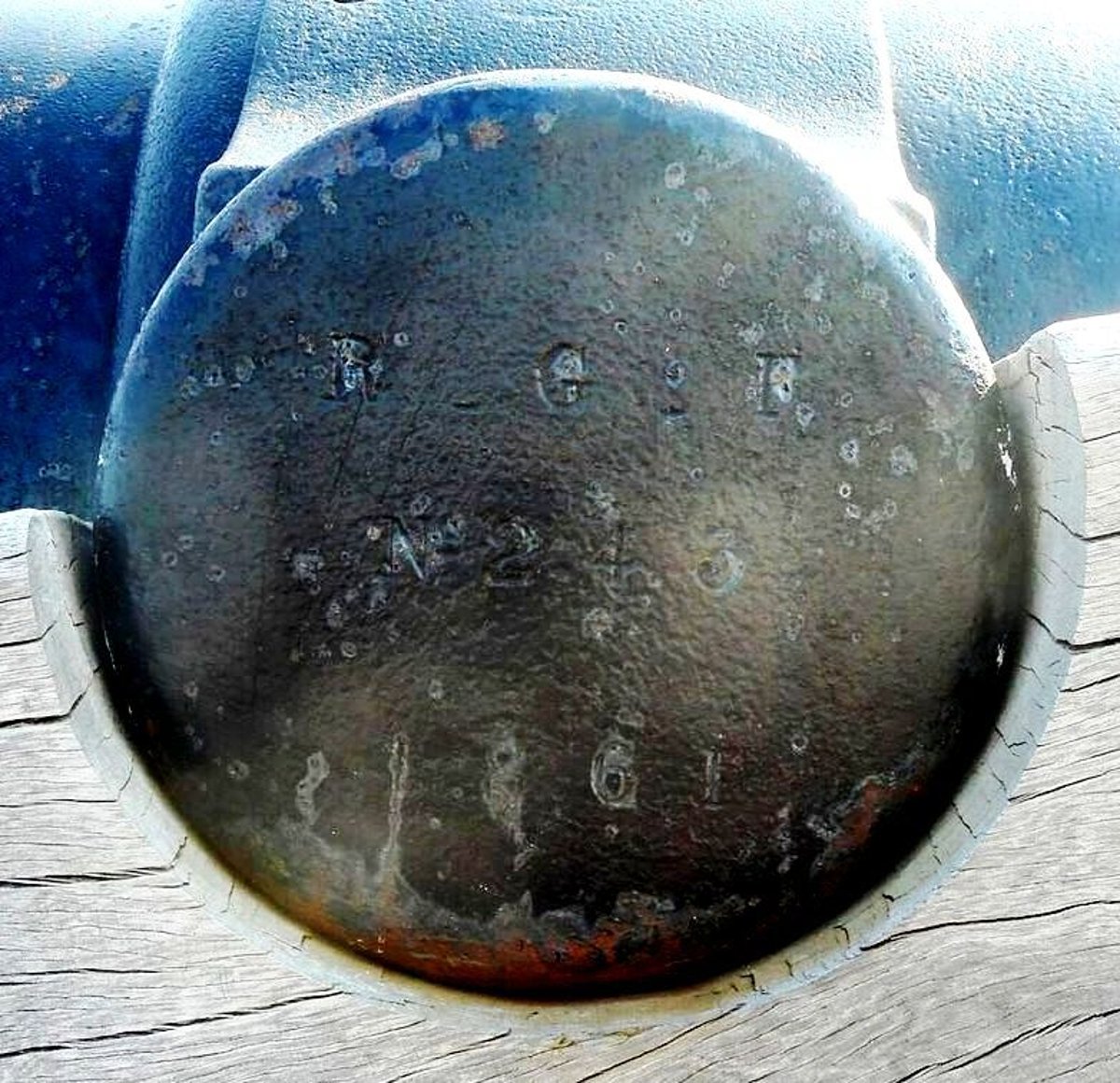
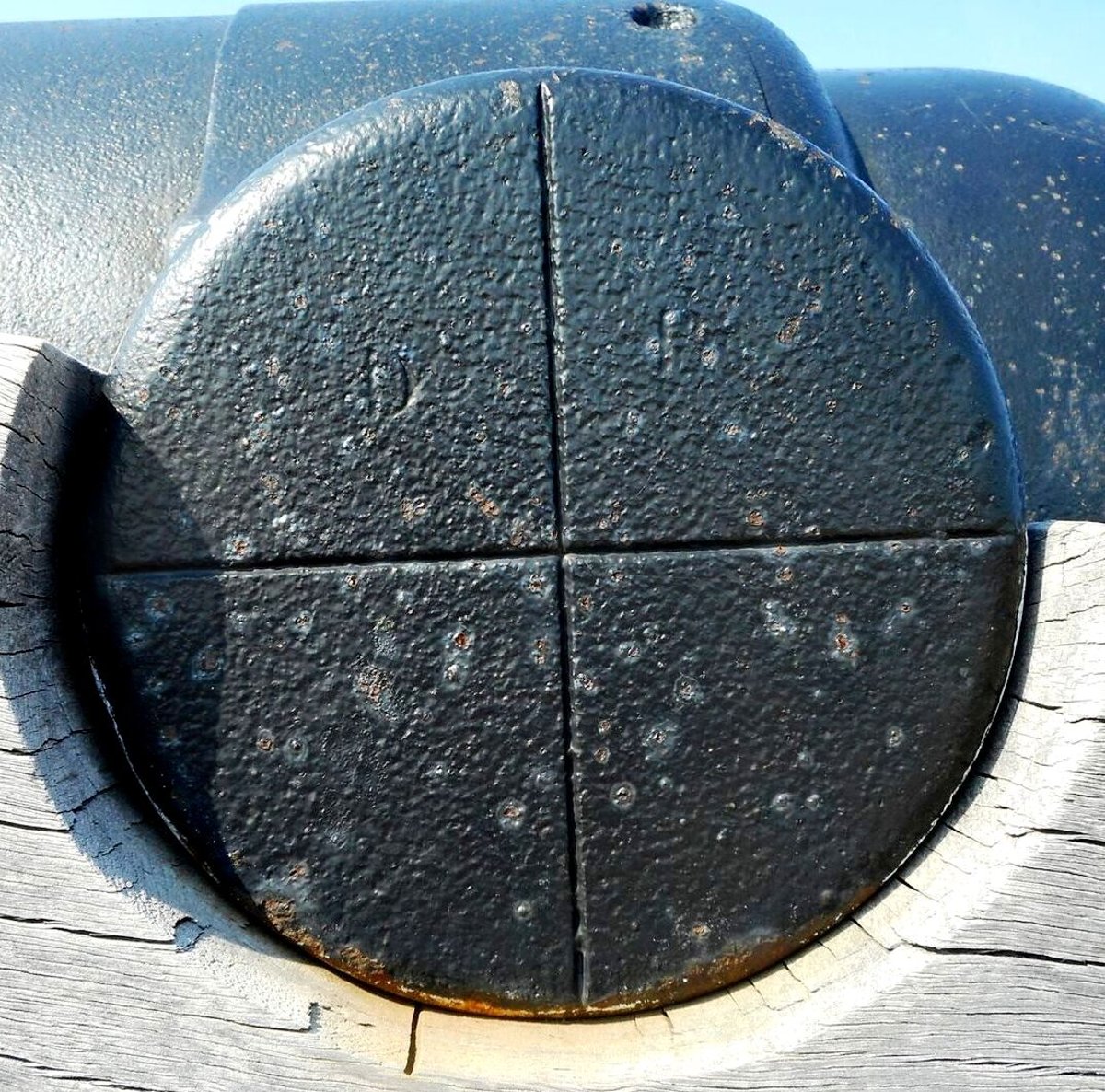
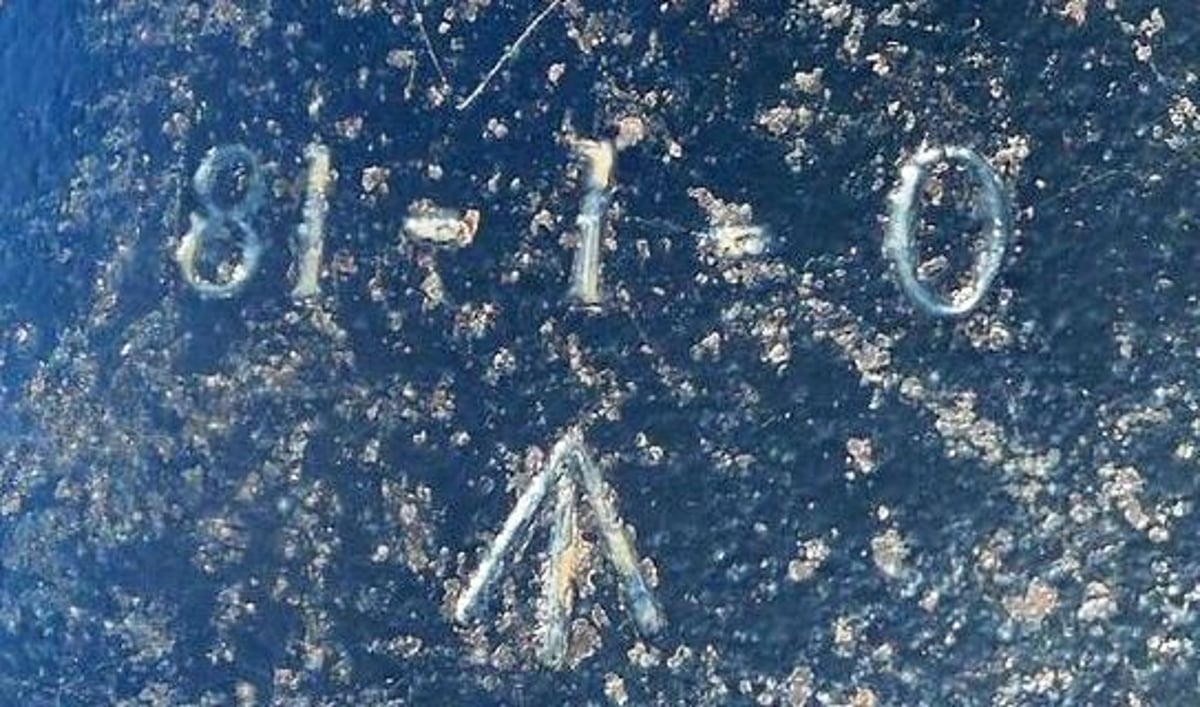
(Terry Honour Photos)

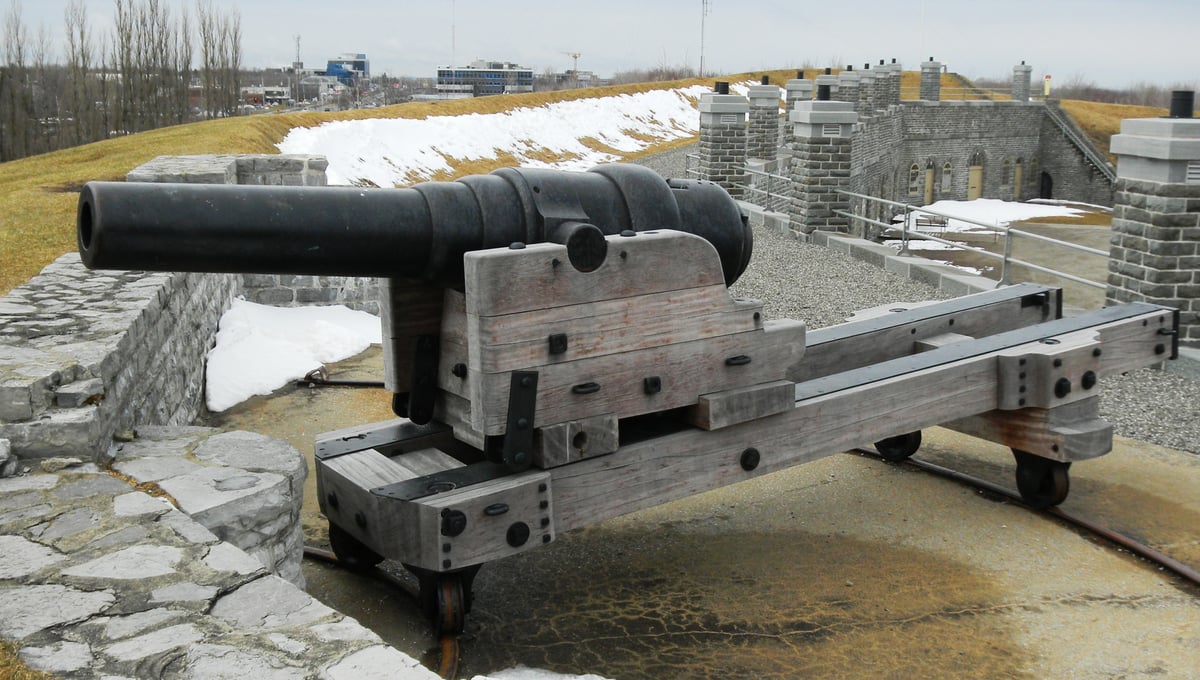
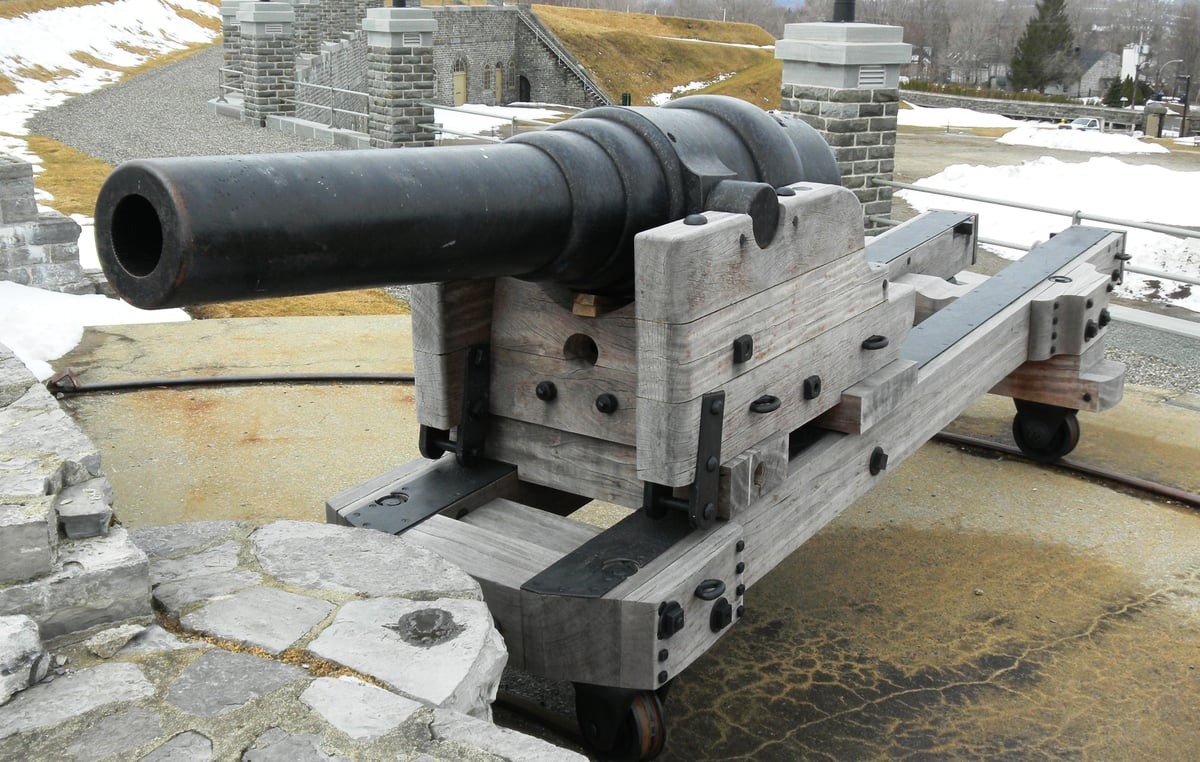
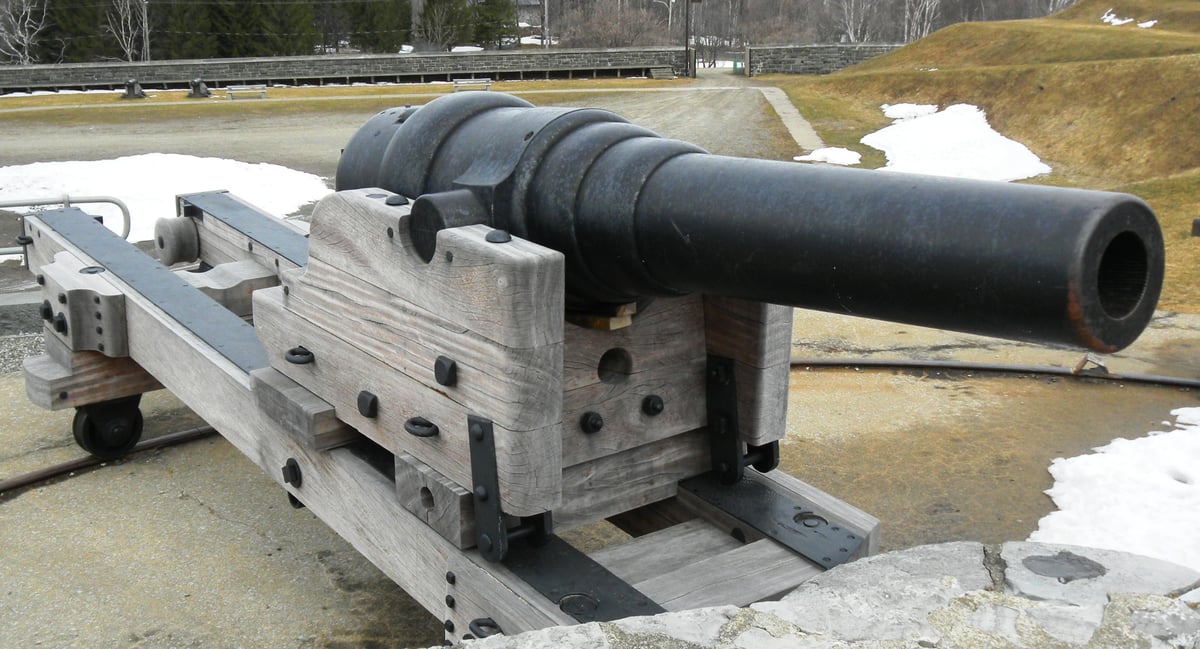
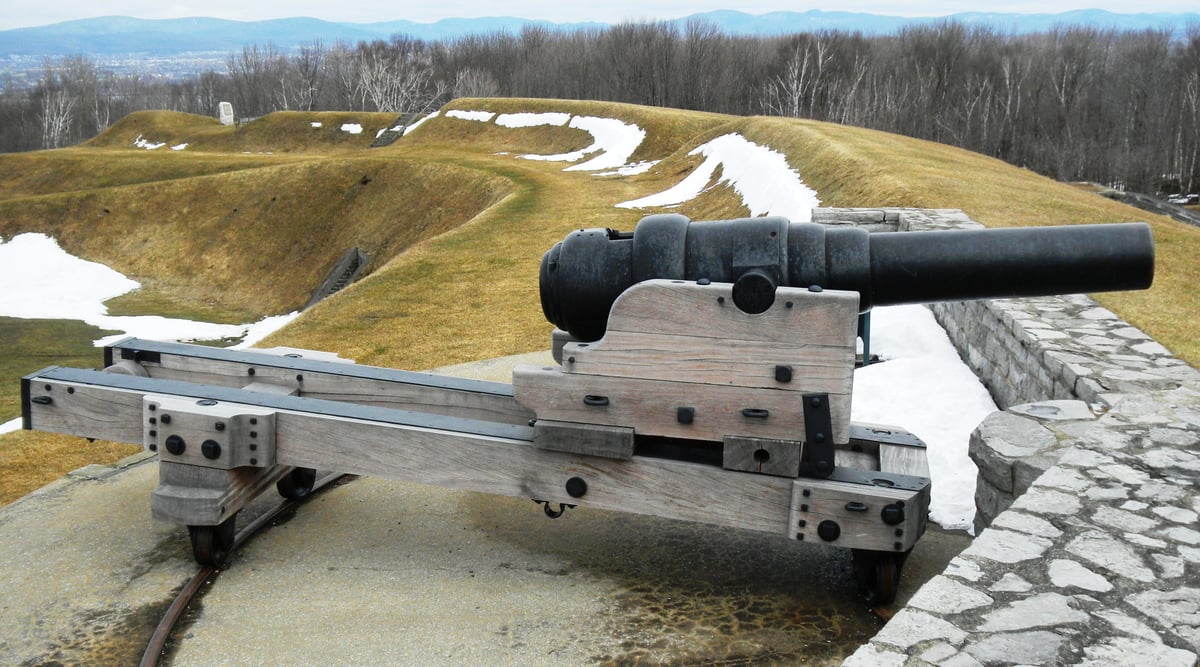
(Author Photos)
Armstrong 7-inch 72-cwt (110-pounder) Rifled Breech-Loading Gun, weight 81-1-0 (9,100 lbs), (RGF No. 243) Queen Victoria cypher, broad arrow mark, mounted on a long wood traversing carriage on the ramparts of Fort No. 1 facing East.
Armstrong 7 pouces 72 cwt (110 livres) Canon à chargement par la culasse rayée, poids 81-1-0 (9100 lb), (RGF n ° 243) Chiffre
Queen Victoria, large flèche, monté sur un long chariot traversant en bois sur les remparts du fort n ° 1 face à l'est.
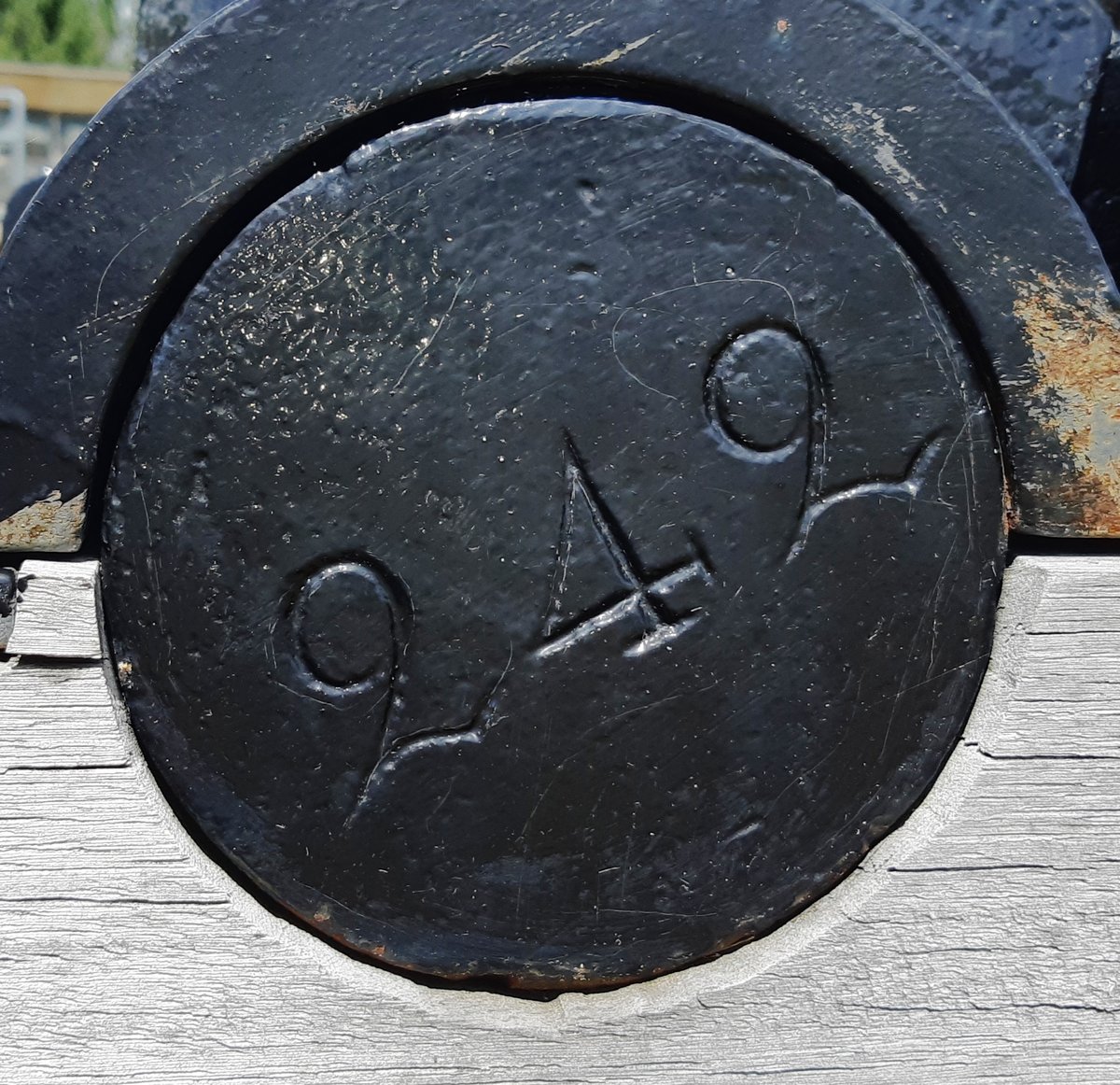
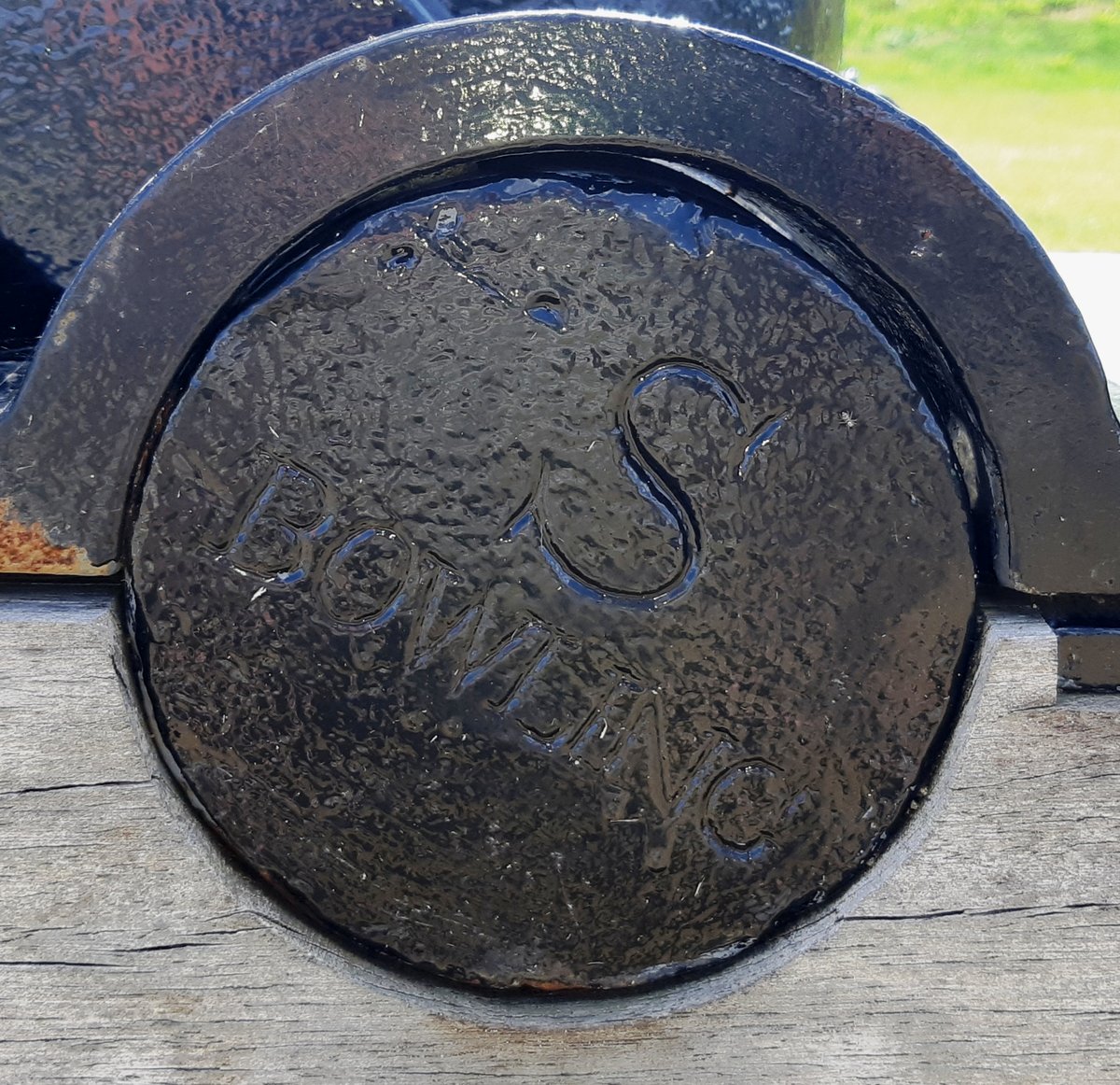

(Author Photos)
Cast Iron 8-inch 9-cwt Smoothbore Muzzleloading Land Service Mortar, weight 8-1-6 (930 lbs), (S BOWLING) on the left trunnion, (Serial No. 242) on the right trunnion, 1 foot 10 inches long, No. 1 of 2.
Mortier de service terrestre à chargement par muzzlel à alésage lisse 8 pouces 9 cwt Fonte, poids 8-1-6 (930 lb), (S BOWLING)
sur le tourillon gauche, (numéro de série 242) sur le tourillon droit, 1 pied 10 pouces de long , N ° 1 sur 2.



(Terry Honour Photos)
Cast Iron 8-inch 9-cwt Smoothbore Muzzleloading Land Service Mortar, weight 8-1-6 (930 lbs), (S BOWLING) on the left trunnion, (Serial No. 242) on the right trunnion, 1 foot 10 inches long, No. 1 of 2.
Mortier de service terrestre à chargement par muzzlel à alésage lisse 8 pouces 9 cwt Fonte, poids 8-1-6 (930 lb), (S BOWLING)
sur le tourillon gauche, (numéro de série 242) sur le tourillon droit, 1 pied 10 pouces de long, N ° 1 sur 2.
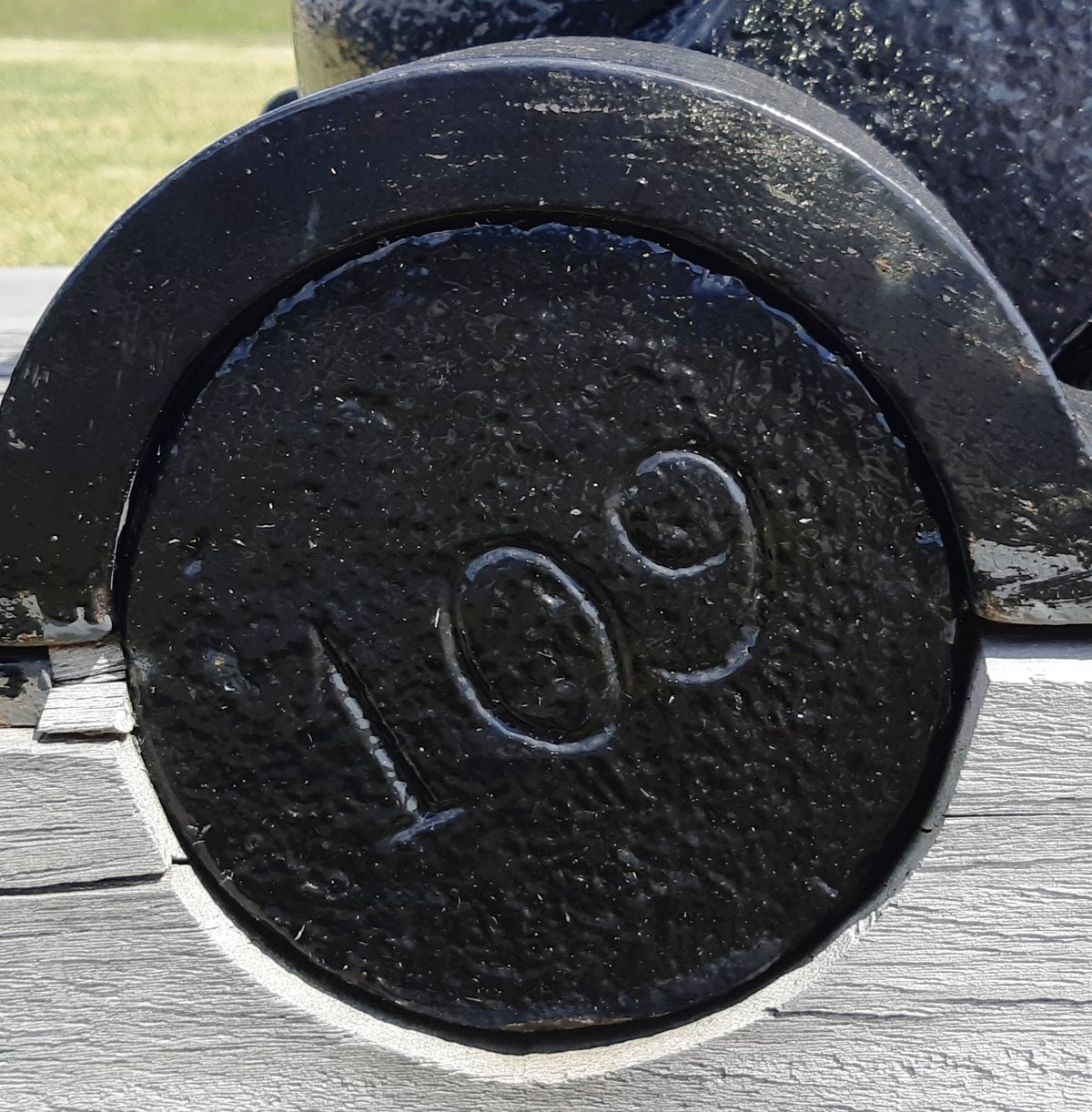


(Author Photos)
Cast Iron 8-inch 9-cwt Smoothbore Muzzleloading Land Service Mortar, weight 8-2-14 (966 lbs), (S) on the left trunnion, (Serial No. 109) on the right trunnion, 1 foot 10 inches long, No. 2 of 2.
Mortier de service terrestre à chargement par muzzlel à alésage lisse de 8 pouces 9 cwt, poids 8-2-14 (966 lb), (S) sur le
tourillon gauche, (numéro de série 109) sur le tourillon droit, 1 pied 10 pouces de long, N ° 2 sur 2.



(Terry Honour Photos)



(Terry Honour Photos)
Cast Iron 8-inch 9-cwt Smoothbore Muzzleloading Land Service Mortar, weight 8-2-14 (966 lbs), (S) on the left trunnion, (Serial No. 109) on the right trunnion, 1 foot 10 inches long, No. 2 of 2.
Mortier de service terrestre à chargement par muzzlel à alésage lisse de 8 pouces 9 cwt, poids 8-2-14 (966 lb), (S) sur le
tourillon gauche, (numéro de série 109) sur le tourillon droit, 1 pied 10 pouces de long, N ° 2 sur 2.


(Terry Honour Photos)
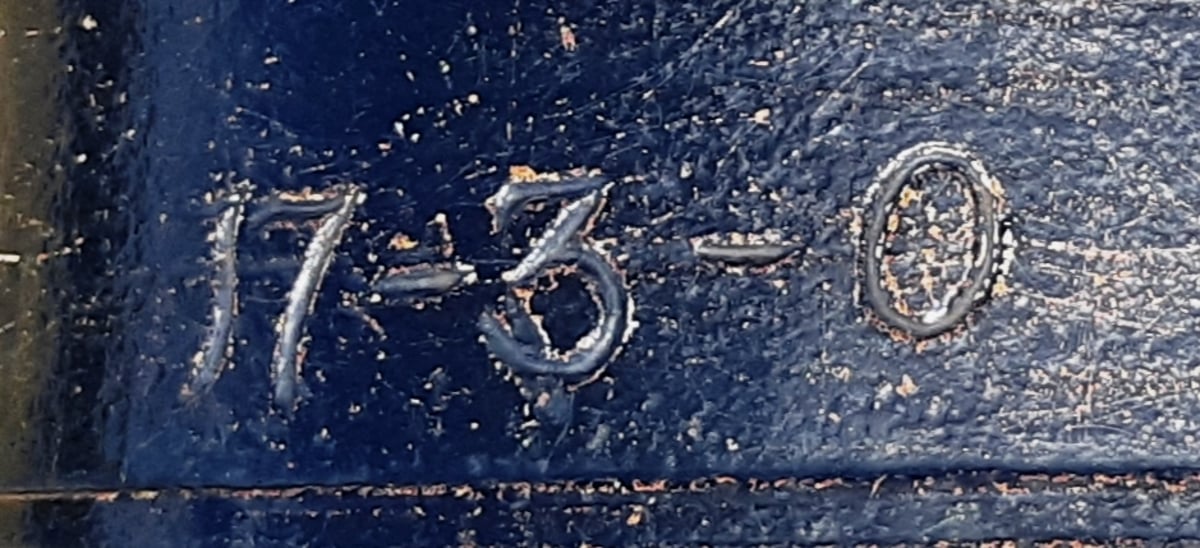
(Author Photos)
Cast Iron 32-pounder 17-cwt Smoothbore Muzzleloading Carronade with a Blomefield pattern breeching ring, weight 17-3-0 (1,988 lbs), mounted on an iron garrison carriage, No. 1 of 2.
Carronade à chargement par la bouche lisse de 32 livres de 17 cwt en fonte avec anneau de culasse à motif Blomefield, poids 17-3-0 (1988 lb), montée sur un chariot de garnison en fer, n ° 1 sur 2.
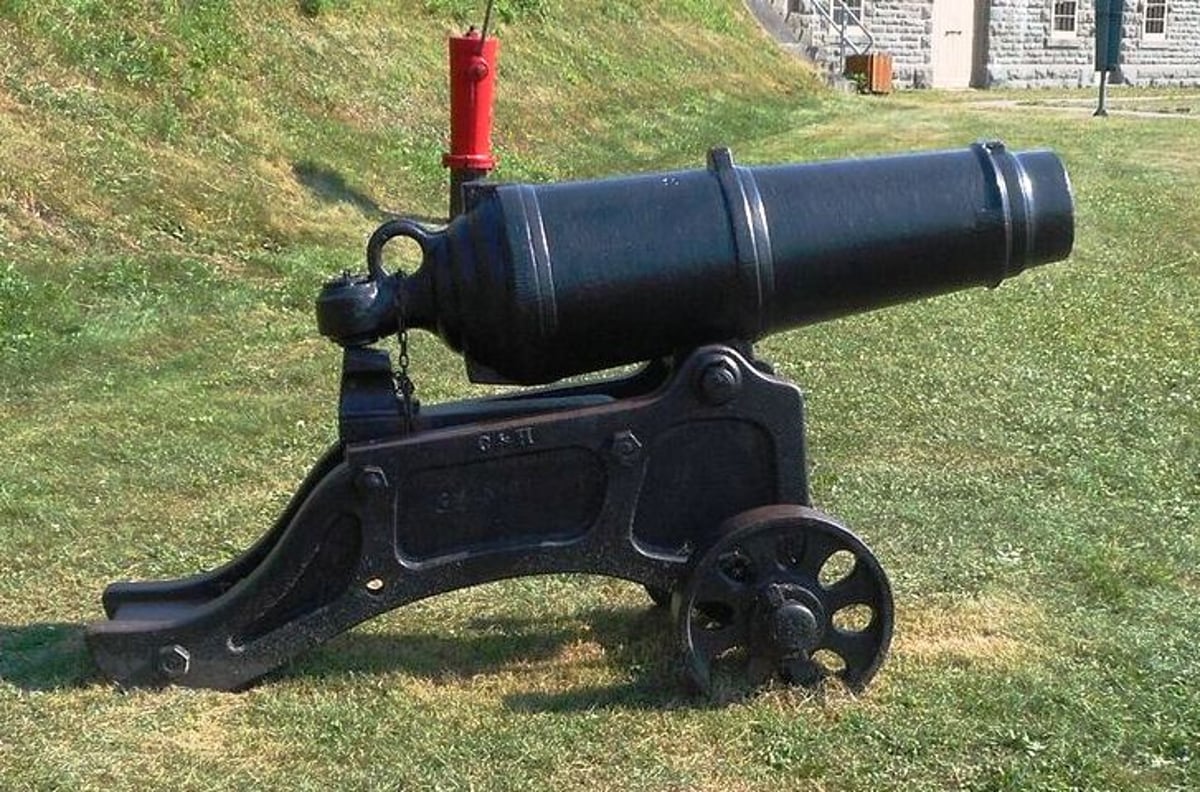
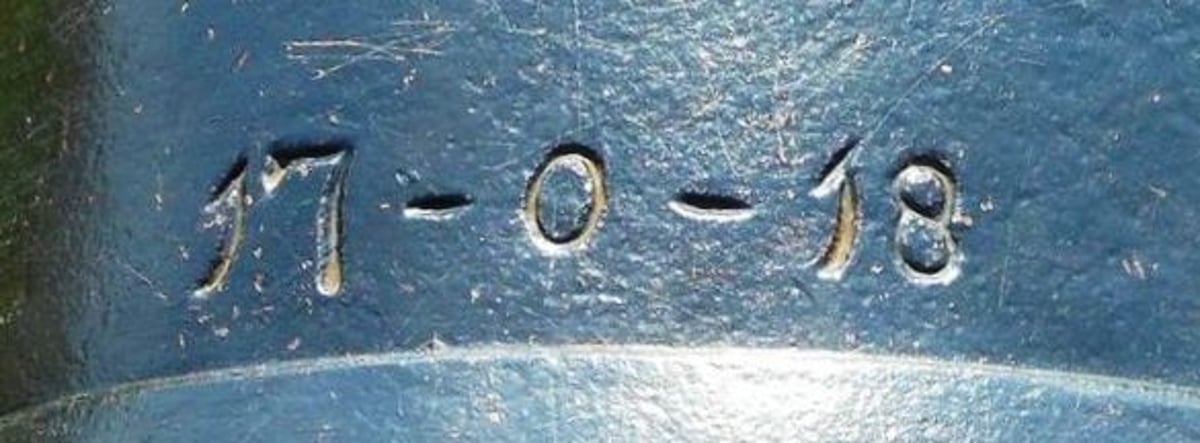
(Terry Honour Photos)

(Author Photos)
Cast Iron 32-pounder 17-cwt Smoothbore Muzzleloading Carronade with a Blomefield pattern breeching ring, weight 17-0-18 (1,922 lbs), mounted on an iron garrison carriage, No. 2 of 2.
Carronade à chargement par la bouche lisse de 32 livres de 17 cwt en fonte avec anneau de culasse à motif Blomefield,
poids 17-0-18 (1922 lb), montée sur un chariot de garnison en fer, n ° 2 sur 2.

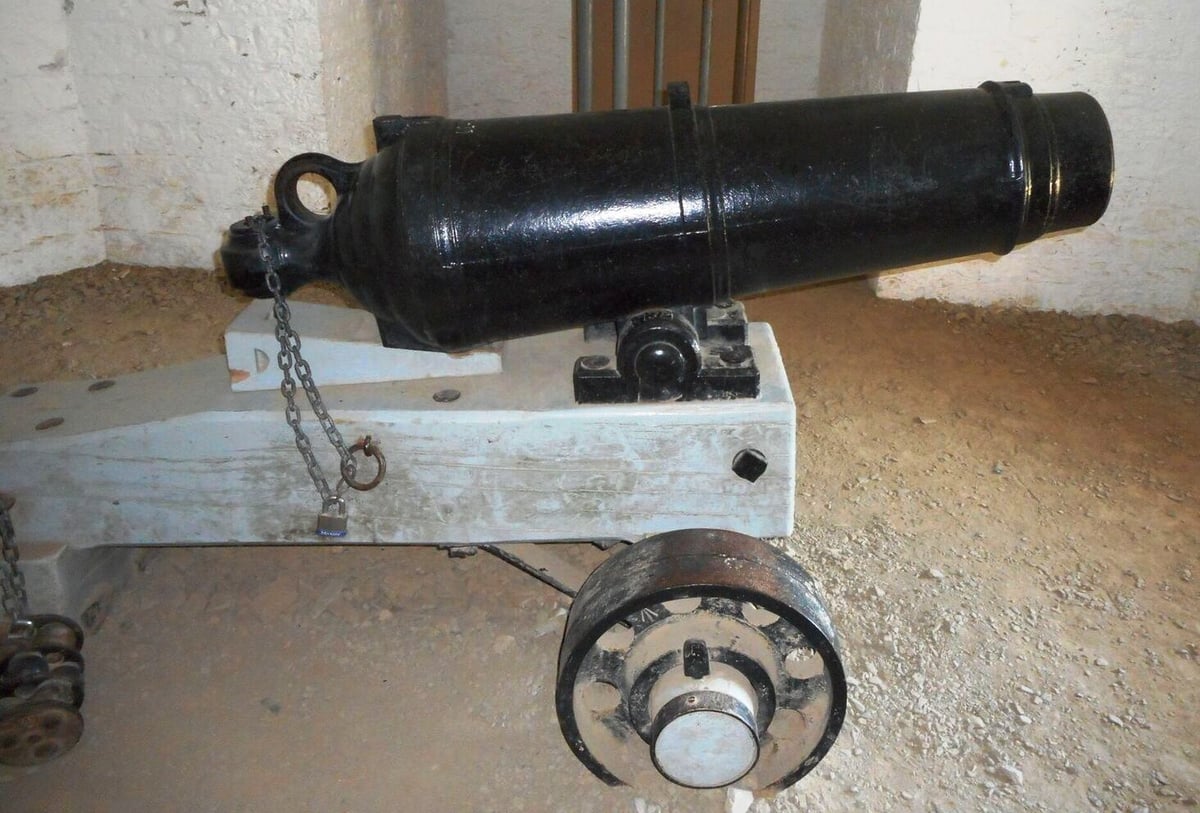
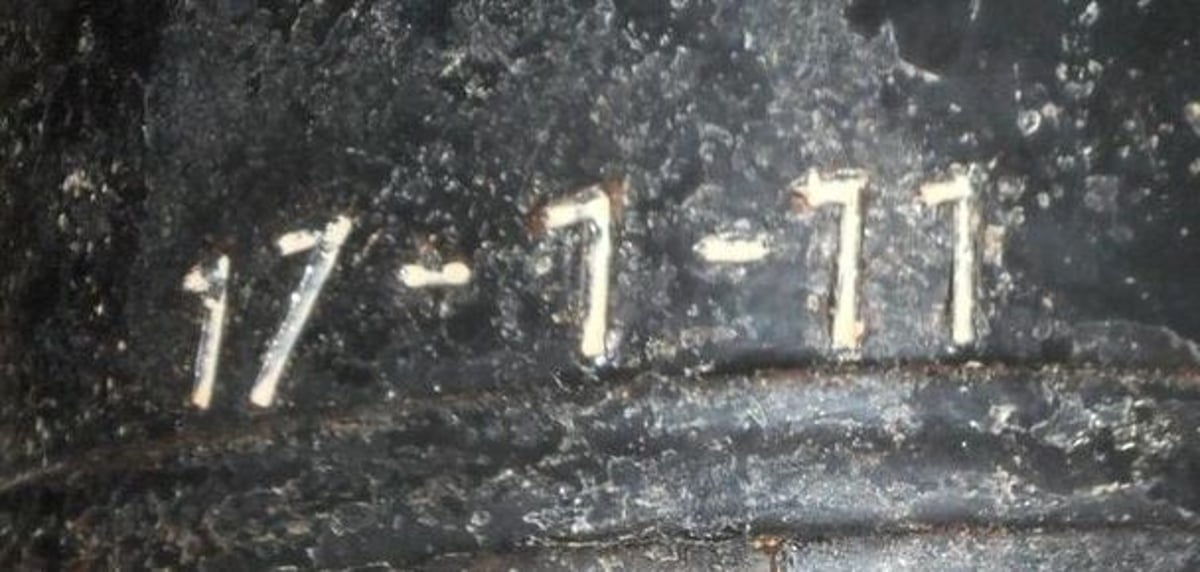
(Terry Honour Photos)
Cast Iron 32-pounder 17-cwt Smoothbore Muzzleloading Carronade with a Blomefield pattern breeching ring, weight 17-1-11 (1,943 lbs), mounted on a wood naval gun carriage, inside the fort museum.
Carronade à chargement par la bouche lisse de 32 livres de 17 cwt en fonte avec anneau de culasse à motif Blomefield, poids 17-1-11 (1 943 livres), montée sur un chariot de canon naval en bois, à l'intérieur du musée du fort.

(Author Photos)
Cast Iron 12-pounder 6-cwt Smoothbore Muzzleloading Carronade with a Blomefield pattern breeching ring, weight stamp 6-2-11 (739 lbs), mounted on an iron garrison carriage.
Carronade à chargement par la bouche lisse de 12 livres de 6 cwt en fonte avec un anneau de culasse à motif Blomefield, poinçon de poids 6-2-11 (739 lb), montée sur une voiture de garnison en fer.
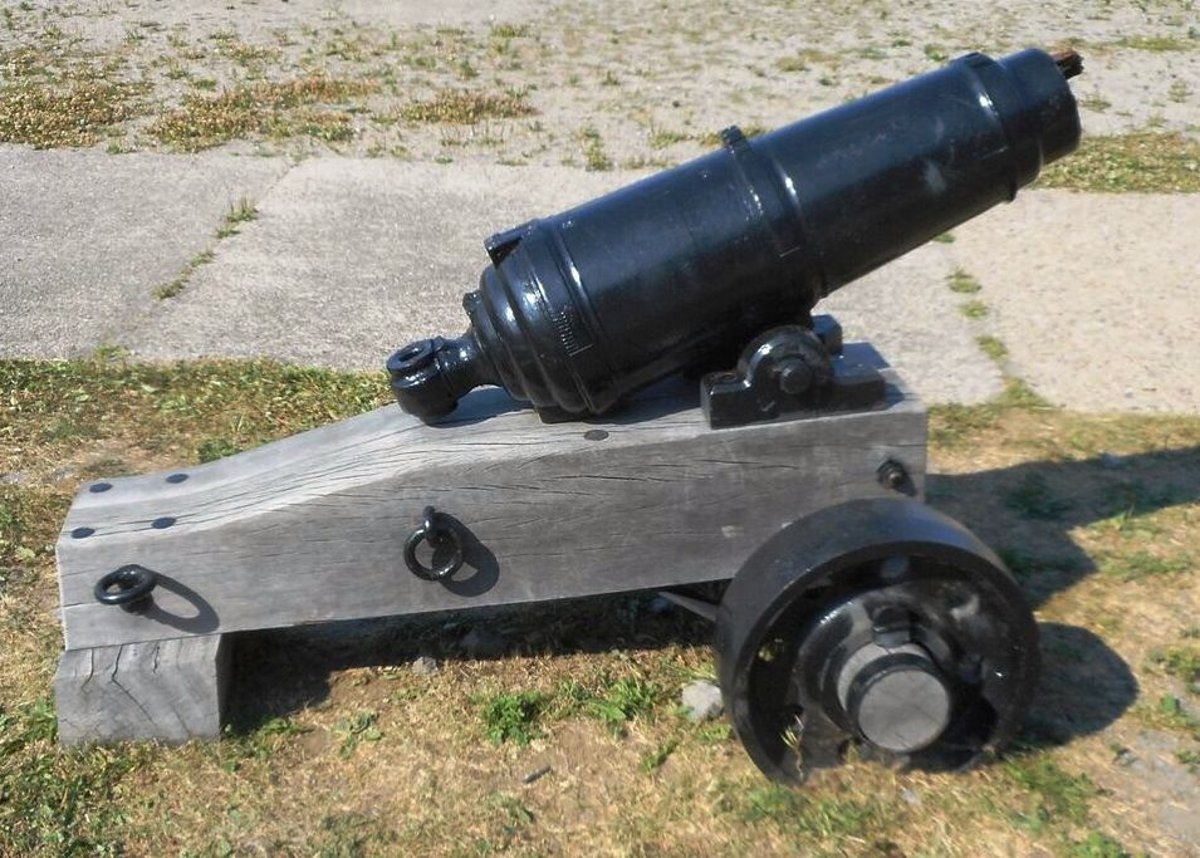

(Terry Honour Photos)
Cast Iron 12-pounder 6-cwt Smoothbore Muzzleloading Carronade with a Blomefield pattern breeching ring, weight stamp 6-2-11 (739 lbs), mounted on an iron garrison carriage.
Carronade à chargement par la bouche lisse de 12 livres de 6 cwt en fonte avec un anneau de culasse à motif Blomefield, poinçon de poids 6-2-11 (739 lb), montée sur une voiture de garnison en fer.
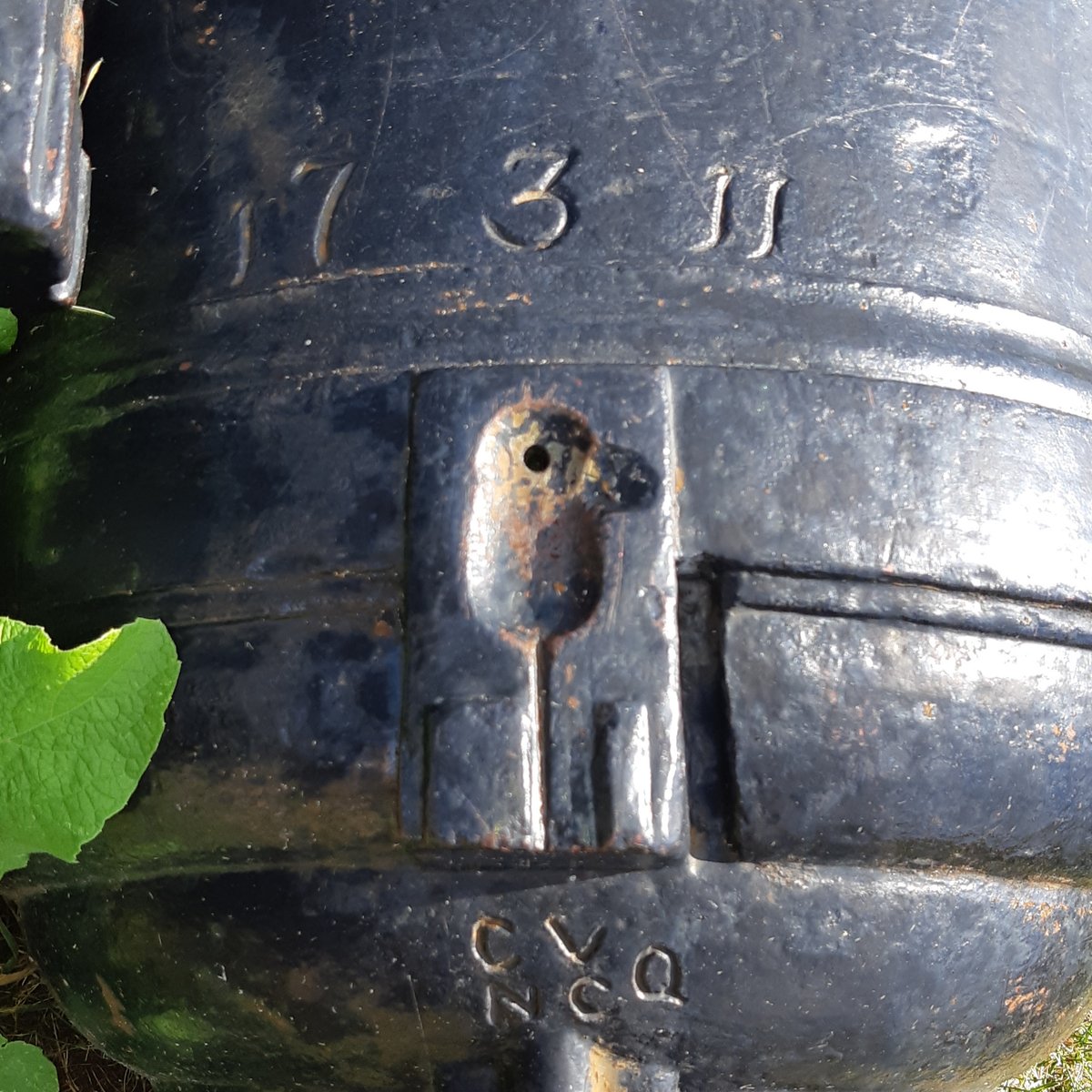
(Author Photos)
Cast Iron 32-pounder 17-cwt Smoothbore Muzzleloading Carronade with a Blomefield pattern breeching ring, weight 17-3-11 (1,999 lbs), No. 1 of 2, unmounted.
Carronade à chargement par la bouche à âme lisse de 32 livres de 17 cwt en fonte avec anneau de culasse à motif Blomefield, poids 17-3-11 (1999 livres), n ° 1 sur 2, non montée.
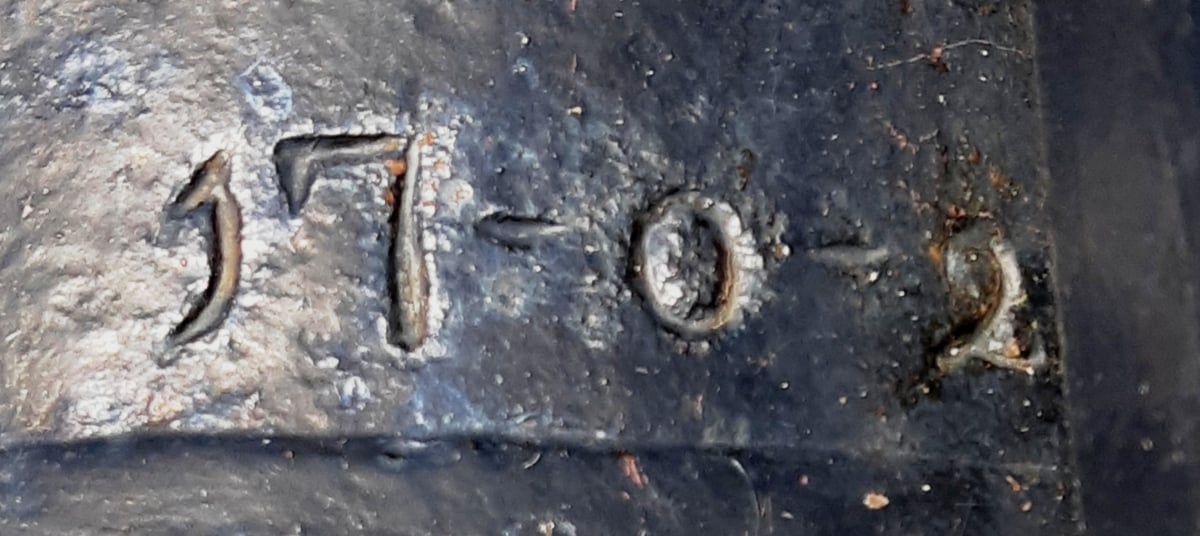
(Author Photos)
Cast Iron 32-pounder 17-cwt Smoothbore Muzzleloading Carronade with a Blomefield pattern breeching ring, weight 17-0-2 (1,906 lbs), No. 2 of 2, unmounted.
Carronade à chargement par la bouche lisse de 32 livres de 17 cwt en fonte avec anneau de culasse à motif Blomefield, poids 17-0-2 (1906 livres), n ° 2 sur 2, non montée.
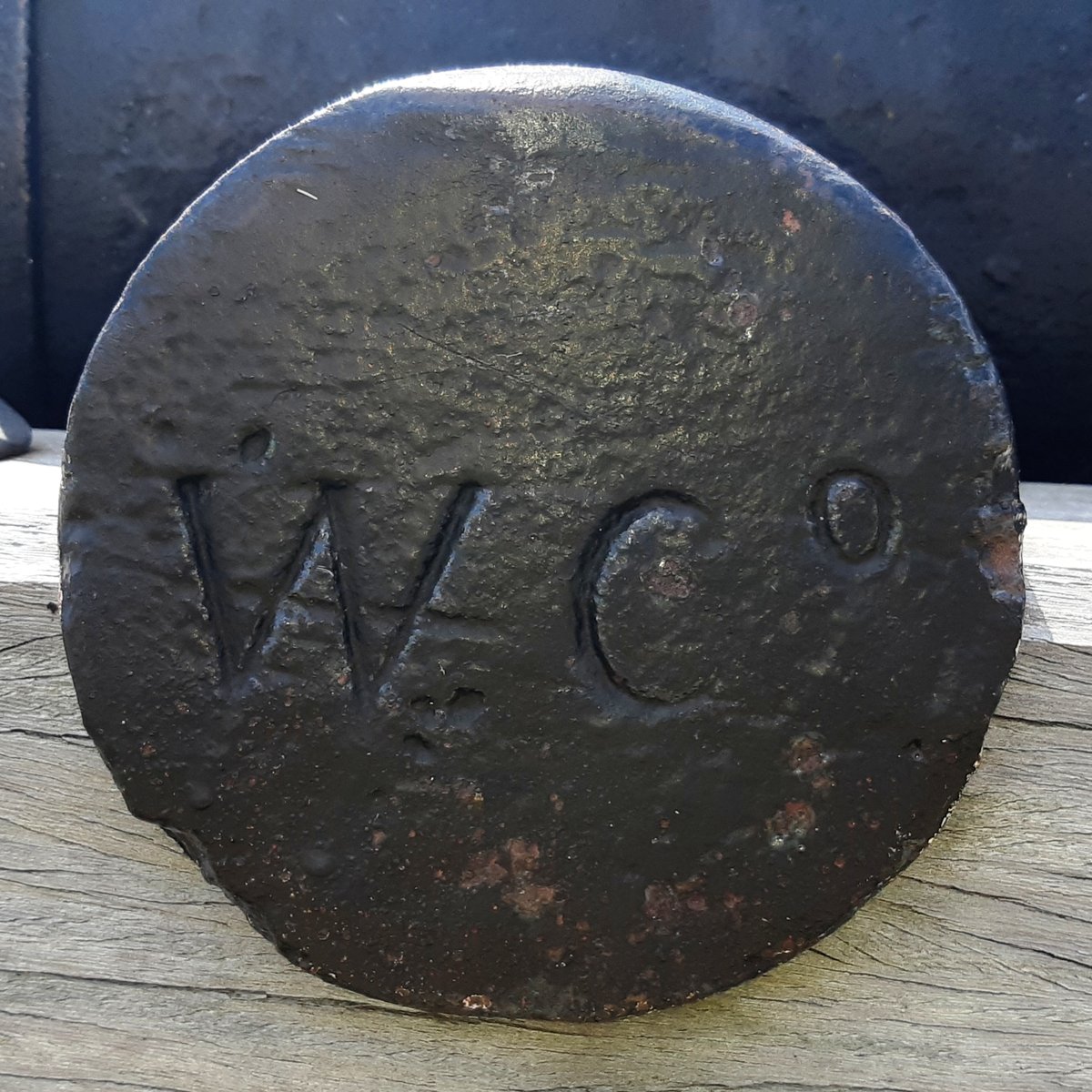

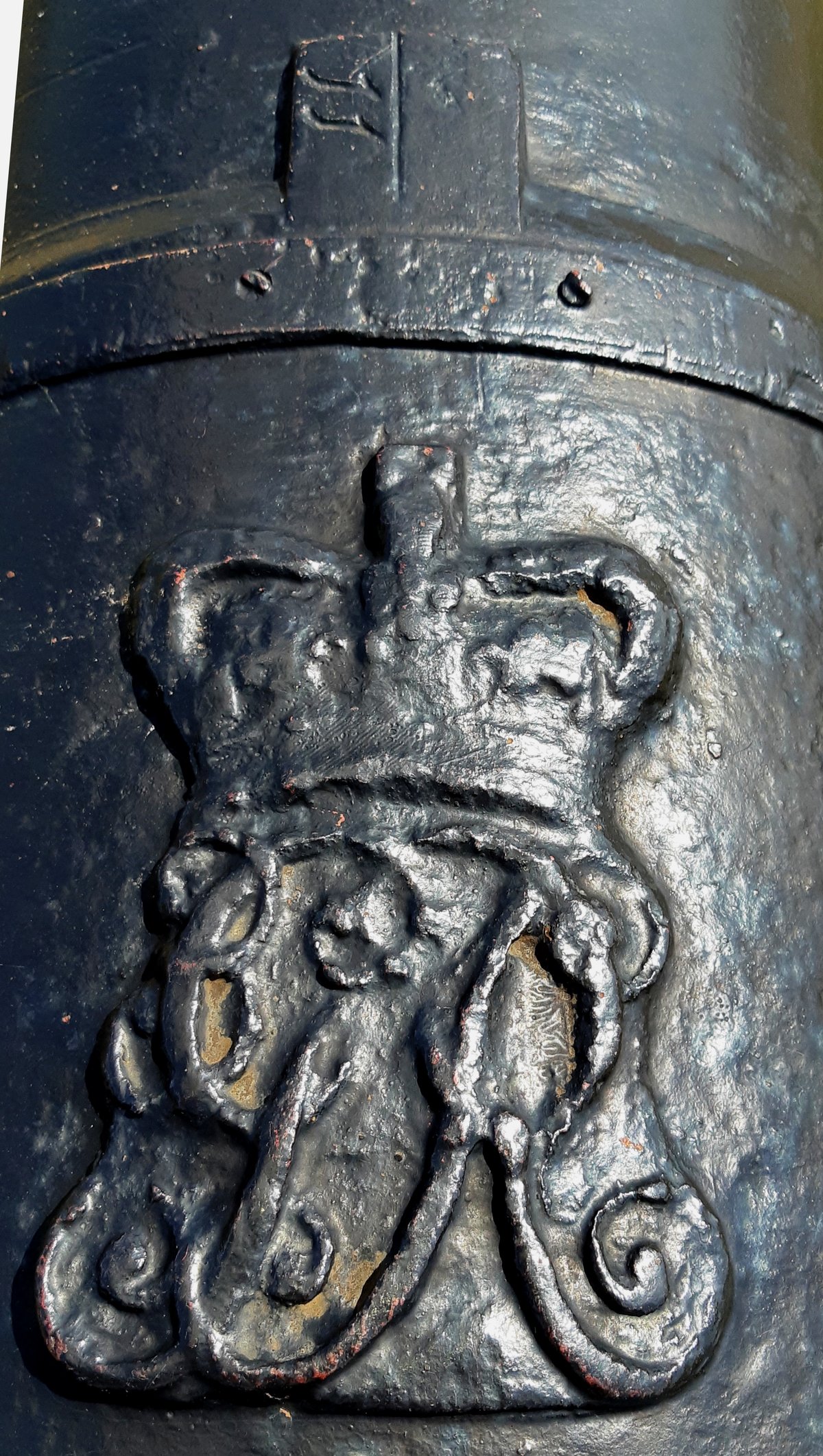
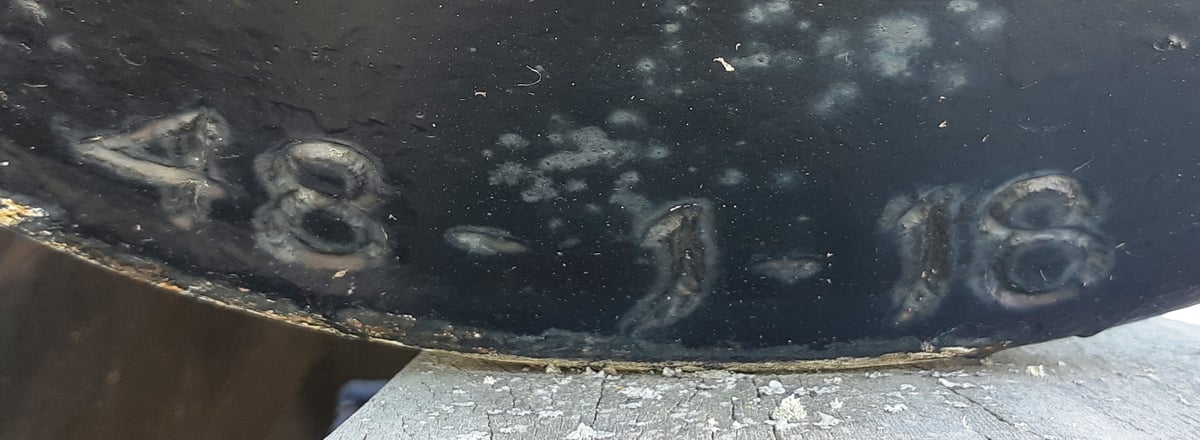
(Author Photos)
Blomefield Cast Iron 24-pounder 50-cwt Smoothbore Muzzleloading Gun, weight 48-1-18 (5,422 lbs), Samuel Walker & Company of Rotherham, England (WCo) on left trunnion, (Serial No. 55) on right trunnion, King George III cypher, broad arrow mark, mounted on a wood naval gun carriage, No. 1 of 2.
Blomefield Cast Iron 24-pounder 50-cwt Smoothbore Muzzleloading Gun, poids 48-1-18 (5422 lbs), Samuel Walker &
Company of Rotherham, England (WCo) sur le tourillon gauche, (série n ° 55) sur le tourillon droit, King Chiffre George III,
marque de flèche large, monté sur un chariot de canon naval en bois, n ° 1 sur 2.

(Bernard Gagnon Photo)
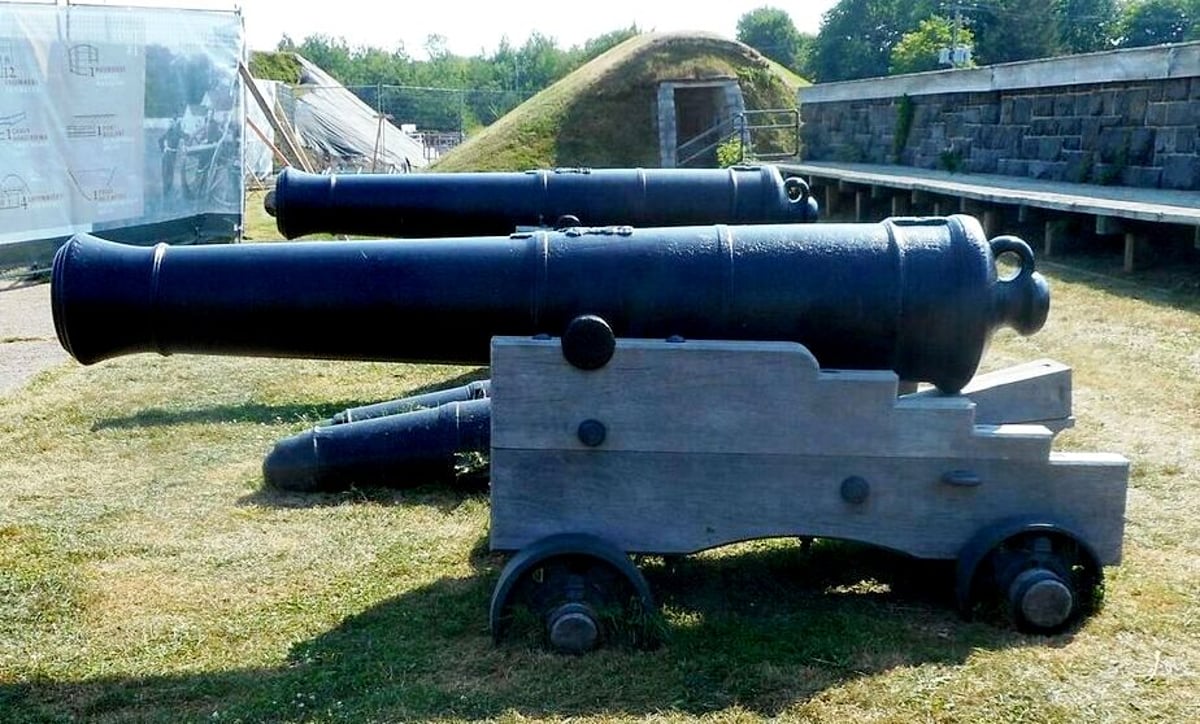
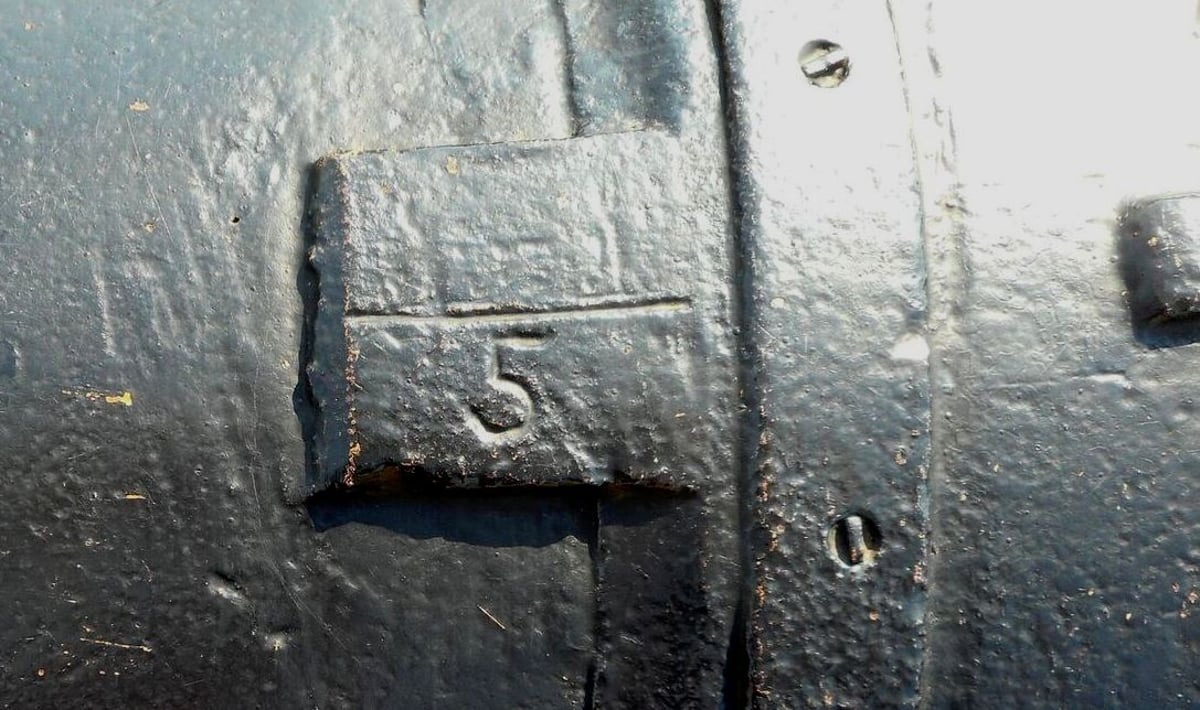
(Terry Honour Photos)
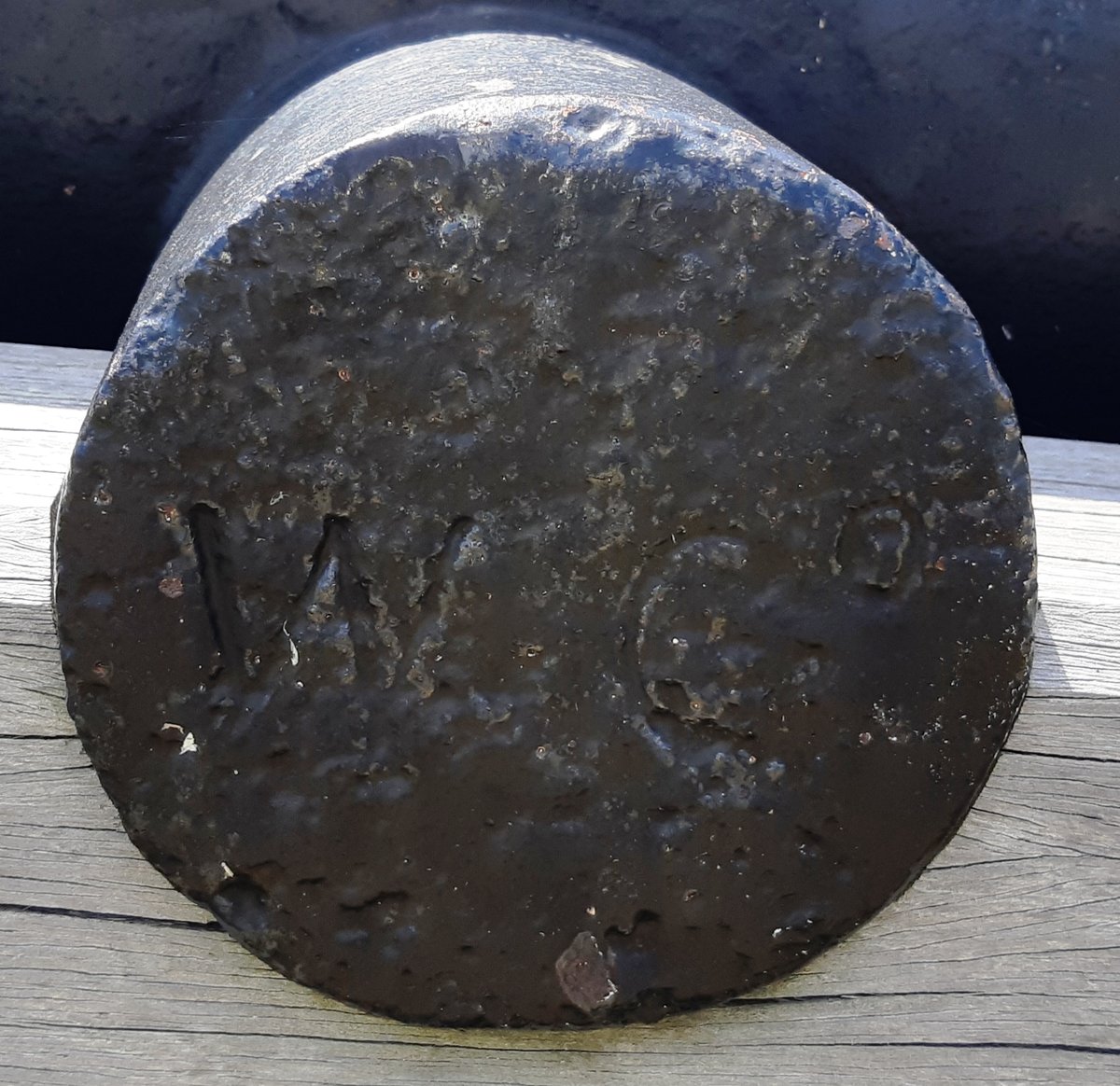
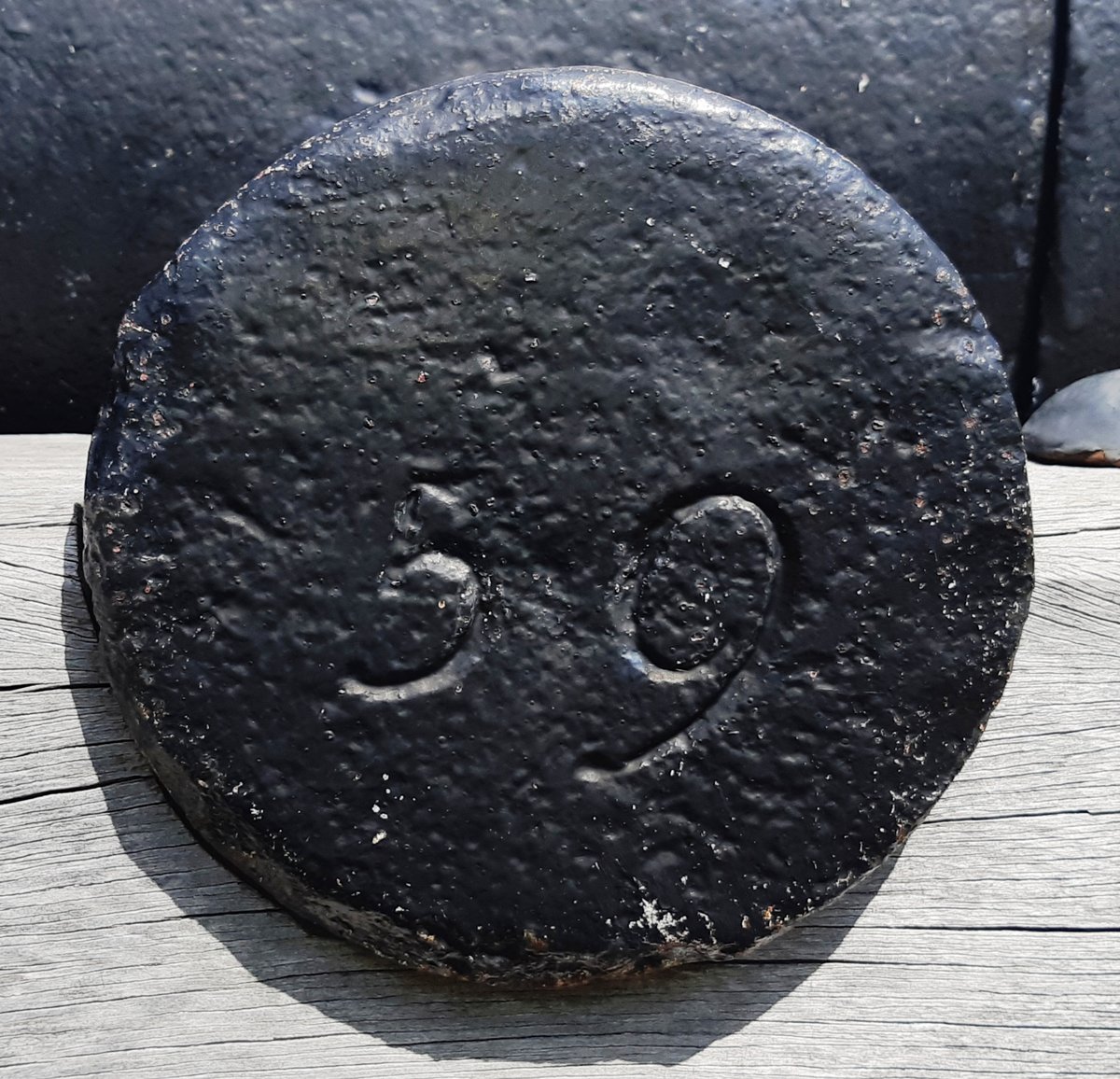

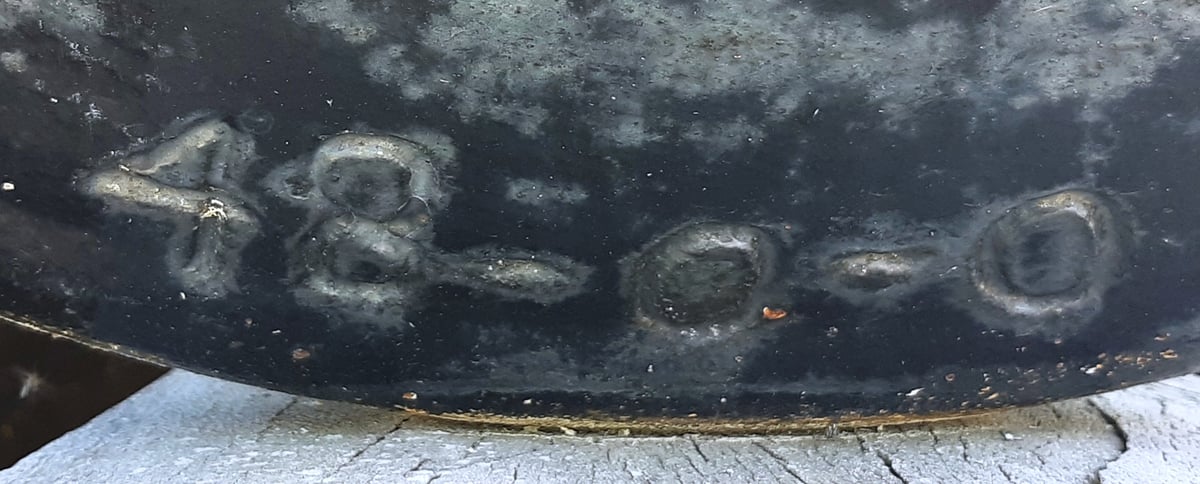
(Author Photos)
Blomefield Cast Iron 24-pounder 50-cwt Smoothbore Muzzleloading Gun, weight 48-0-0 (5,376 lbs), Samuel Walker & Company of Rotherham, England (WCo) on left trunnion, (Serial No. 59) on right trunnion, King George III cypher, broad arrow mark, mounted on a wood naval gun carriage, No. 2 of 2.
Blomefield Cast Iron 24-pounder 50-cwt Smoothbore Muzzleloading Gun, poids 48-0-0 (5376 lbs), Samuel Walker & Compagnie de Rotherham, Angleterre (WCo) sur le tourillon gauche, (série n ° 59) sur le tourillon droit, King Chiffre
George III, marque de flèche large, monté sur un char de canon naval en bois, n ° 2 sur 2.
Lévis, Fort No. 1
Blomefield Cast Iron 24-pounder 50-cwt Smoothbore Muzzleloading Gun, poids 48-0-0 (5376 lbs), Samuel Walker &
Company of Rotherham, England (WCo) sur le tourillon gauche, (série n ° 59) sur le tourillon droit, King Chiffre George III,
marque de flèche large, monté sur un chariot de canon naval en bois, n ° 2 sur 2.
Fort No. 1 was begun in 1865 and was surrounded with a 16-foot deep ditch, which was covered by flank howitzers in each of the fort's caponnieres, as well as loopholes from whence the garrison could fire their rifles at attackers who had made it into the ditch. The fort was designed to mount twenty big guns, and there were thirteen brick casemates under the terreplein, in which the garrison would be housed and/or be protected whilst under bombardment. None of the forts was ever garrisoned, though each received a single Armstrong 7-inch 72-cwt (110-pounder) Rifled Breech-Loading Gun in 1878.
Lévis, Fort No. 2
Also begun in 1865, Fort No. 2 had earthen ramparts on three sides and a masonry wall along the back side and a 40' wide ditch surrounded the perimeter. Outside the ditch a 45% sloped earthwork hid the ditch from the enemy. Two interior caponiers provided protection for the ditches should the enemy penetrate that far. Interior casemates provided quarters for a garrison of about 170 officers and men. Fort No. 2 was essentially complete by 1 July 1869 except for the bridges over the ditch and the doors. The Levis Fort No. 2 Site has been overbuilt by an Insurance Building. It was also armed with a single Armstrong 7-inch 72-cwt (110-pounder) Rifled Breech-Loading Gun in 1878, which appears to have been relocated.
Lévis, Fort No. 3
Fort No. 3 is located near the intersection of Gagnon St. and Boulevard de la Rive South, Levis City. Construction began on Fort No. 3 on 7 Aug 1865. All of the forts were of similar but not identical design, differing sites and the necessity to protect one another dictated the differences. Fort No. 3 had earthen ramparts on three sides and a masonry wall along the back side and a 40' wide ditch surrounded the perimeter. Outside the ditch a 45% sloped earthwork hid the ditch from the enemy. Two interior caponiers provided protection for the ditches should the enemy penetrate that far. Interior casemates provided quarters for a garrison of about 170 officers and men. Fort No. 3 was essentially complete by 1 Jul 1869 except for the bridges over the ditch and the doors. The contractors had finished work on both their forts before the Royal Engineers had finished work on Fort No. 1. In 1878 all three of the forts received a single Armstrong 7-inch 72-cwt (110-pounder) Rifled Breech-Loading Gun, and Fort No. 3's gun remains in situ. Since all three of the forts faced America and not the Saint Lawrence River they were of little defensive value and by 1905 they were deactivated.
Lévis, fort n ° 1
Le fort n ° 1 a été commencé en 1865 et était entouré d'un fossé de 16 pieds de profondeur, qui était couvert d'obusiers de
flanc dans chacune des caponnières du fort, ainsi que de meurtrières d'où la garnison pouvait tirer ses fusils sur les assaillants
qui l'avaient fait. dans le fossé. Le fort a été conçu pour monter vingt gros canons, et il y avait treize casemates de briques
sous le terre-plein, dans lesquelles la garnison serait logée et / ou protégée pendant les bombardements. Aucun des forts n'a
jamais été en garnison, bien que chacun reçoive un seul canon rayé Armstrong de 7 pouces de 72 cwt (110 livres) en 1878.Lévis, fort n ° 2
Également commencé en 1865, le fort n ° 2 avait des remparts de terre sur trois côtés et un mur de maçonnerie le long du
côté arrière et un fossé de 40 pieds de large entourait le périmètre. À l'extérieur du fossé, un terrassement en pente à 45%
cachait le fossé à l'ennemi. Deux caponnières intérieures assuraient la protection des fossés si l'ennemi pénétrait aussi loin.
Les casemates de l'intérieur ont fourni des logements à une garnison d'environ 170 officiers et hommes. Le fort n ° 2 était
pratiquement terminé le 1er juillet 1869, à l'exception des ponts sur le fossé et des portes. Le site du fort n ° 2 de Levis a été
surconstruit par un bâtiment d'assurance. Il était également armé d'un seul canon rayé à chargement par la culasse Armstrong
de 7 pouces de 72 cwt (110 livres) en 1878, qui semble avoir été déplacé.Lévis, fort n ° 3
Le fort no 3 est situé près de l'intersection de la rue Gagnon et du boulevard de la Rive Sud, à Lévis. La construction du
fort n ° 3 commença le 7 août 1865. Tous les forts étaient de conception similaire mais non identique, des sites différents
et la nécessité de se protéger les uns les autres dictait les différences. Le fort n ° 3 avait des remparts en terre sur trois côtés
et un mur de maçonnerie le long du côté arrière et un fossé de 40 pieds de large entourait le périmètre. À l'extérieur du fossé,
un terrassement en pente à 45% cachait le fossé à l'ennemi. Deux caponnières intérieures assuraient la protection des fossés si
l'ennemi pénétrait aussi loin. Les casemates de l'intérieur ont fourni des logements à une garnison d'environ 170 officiers et
hommes. Le fort no 3 était pratiquement terminé le 1er juillet 1869, à l'exception des ponts sur le fossé et des portes. Les
entrepreneurs avaient terminé les travaux sur leurs deux forts avant que les Royal Engineers aient terminé les travaux sur le
fort n ° 1. En 1878, les trois forts ont reçu un seul canon rayé Armstrong de 7 pouces de 72 cwt (110 livres) à chargement
par la culasse, et le canon du fort n ° 3 reste en place. Étant donné que les trois forts faisaient face à l'Amérique et non au
fleuve Saint-Laurent, ils avaient peu de valeur défensive et, en 1905, ils furent désactivés.
Lévis, Peace Park Cenotaph
.avif)
(Author Photo)
6-pounder 7-cwt QF Anti-Tank Gun, No. 1 of 4 in the Peace Park at Rue Memorial and Rue Monsigneur-Borget.
Canon antichar QF de 6 livres de 7 cwt, n ° 1 sur 4 dans le parc de la Paix, rue Memorial et rue Monsigneur-Borget.
.avif)
(Author Photo)
6-pounder 7-cwt QF Anti-Tank Gun, No. 2 of 4 in the Peace Park at Rue Memorial and Rue Monsigneur-Borget.
Canon antichar QF de 6 livres de 7 cwt, n ° 2 sur 4 dans le parc de la Paix, rue Memorial et rue Monsigneur-Borget.
.avif)
(Author Photo)
6-pounder 7-cwt QF Anti-Tank Gun, No. 3 of 4 in the Peace Park at Rue Memorial and Rue Monsigneur-Borget.
Canon antichar QF de 6 livres de 7 cwt, n ° 3 sur 4 dans le parc de la Paix, rue Memorial et rue Monsigneur-Borget.
.avif)
(Author Photo)
6-pounder 7-cwt QF Anti-Tank Gun, No. 4 of 4 in the Peace Park at Rue Memorial and Rue Monsigneur-Borget.
Canon antichar QF de 6 livres de 7 cwt, n ° 1 sur 4 dans le parc de la Paix, rue Memorial et rue Monsigneur-Borget.
.avif)
.avif)
.avif)
.avif)
.avif)
.avif)
.avif)
.avif)
.avif)
(Réjean Montmarquet Photos)
6 lbs 7 Cwt C. Mk. V saluting gun, weight 5-2-20 (636 lbs)(BR No L 12769 F L 5668). On the top of the barrel inscribed B 1652 TOP and monogram of King George VI. On the platform (3 PDR. Stand, III, No. 976) - Saluting gun from HMCS Bonaventure.
Canon de salut de 6 lbs 7 Cwt C. Mk. V, poids de 5-2-20 (636 lbs)(BR No L 12769 F L 5668). Sur le dessus du canon inscrit B 1652 TOP et monogramme du roi Georges VI. Sur la plate-forme (3 PDR. Stand, III, No. 976) – Canon de salut du NCSM Bonaventure.





